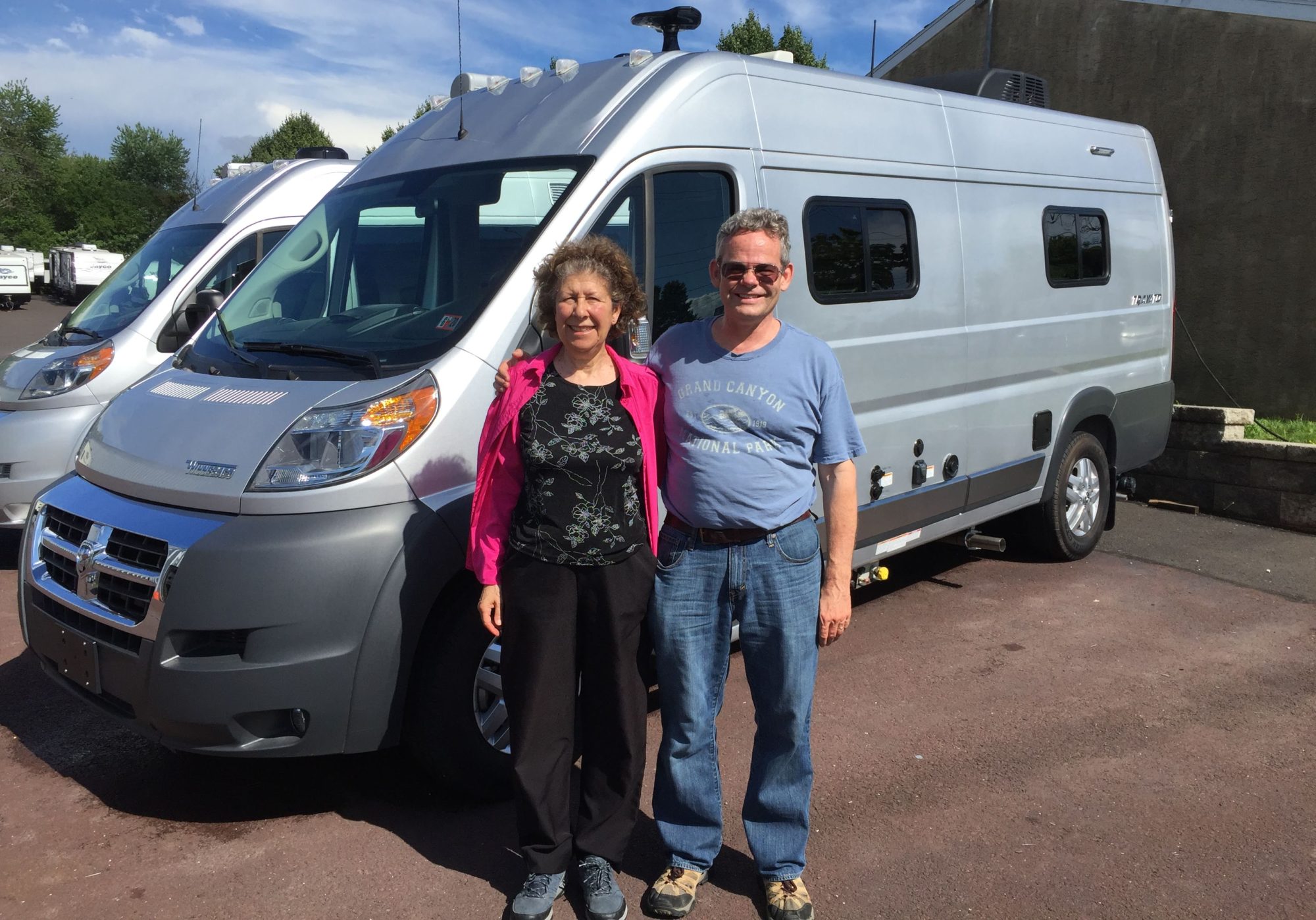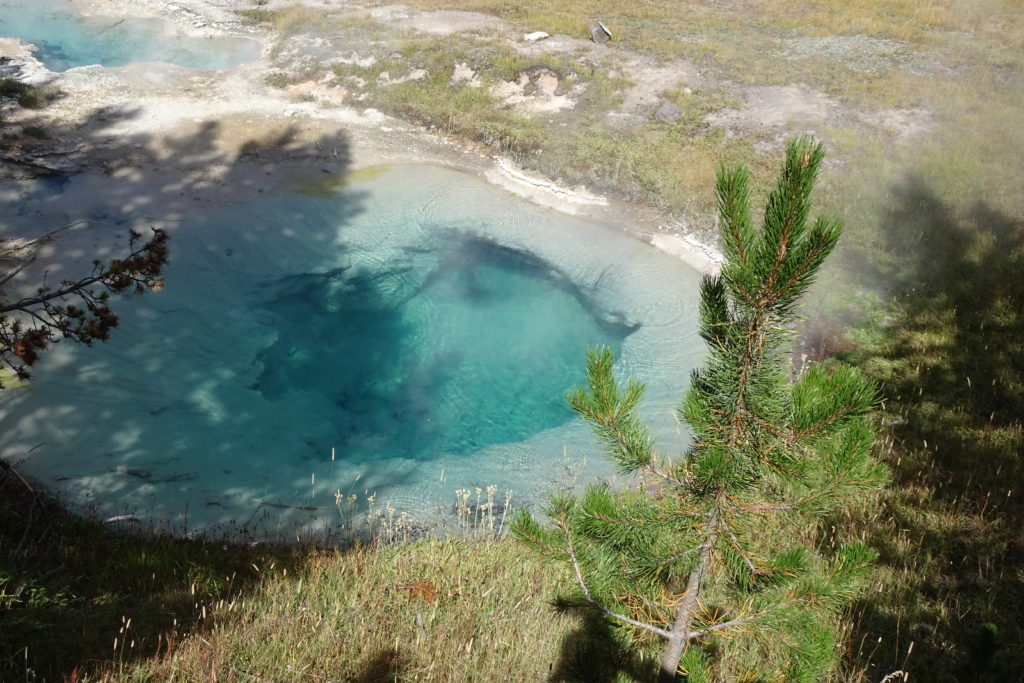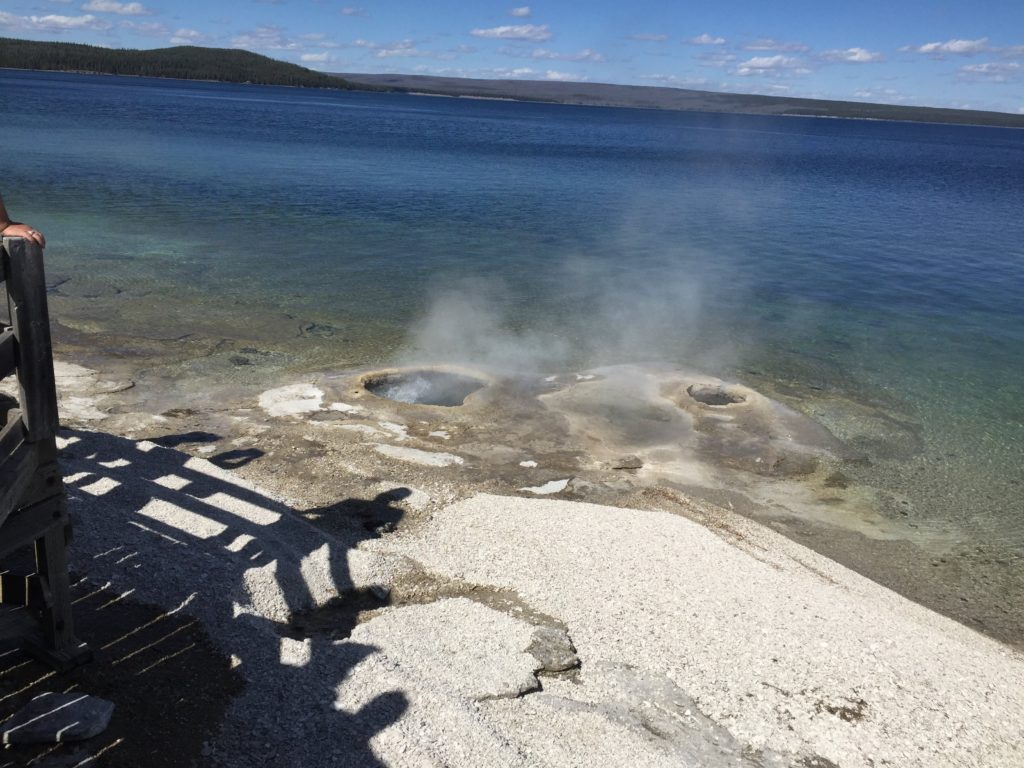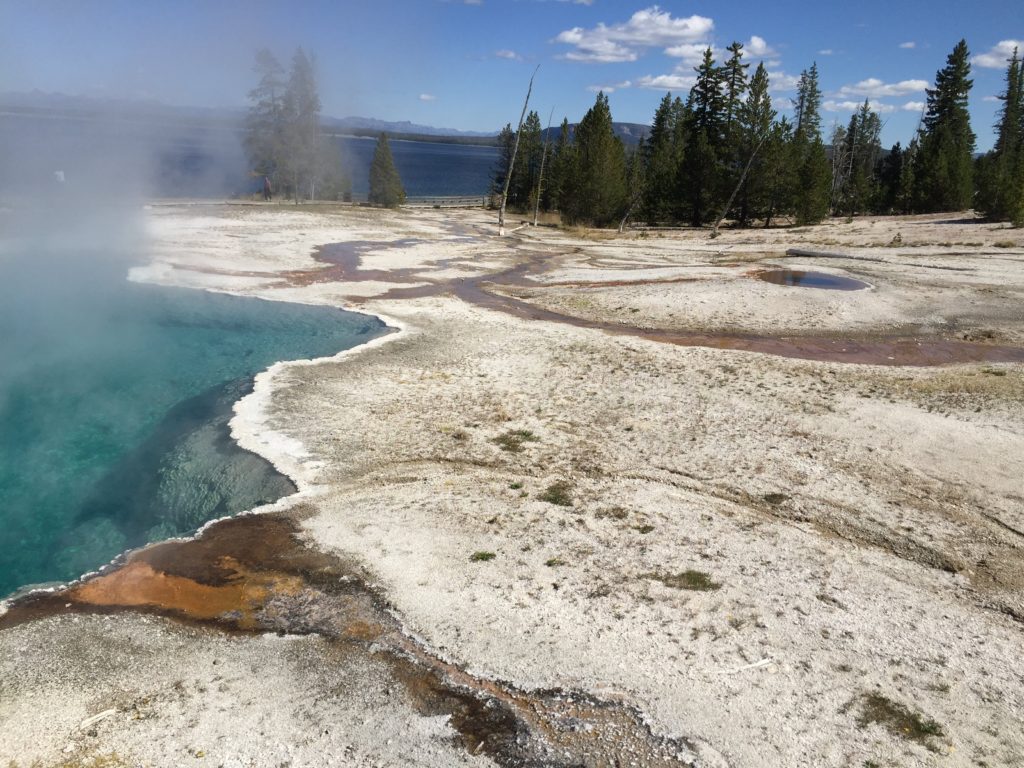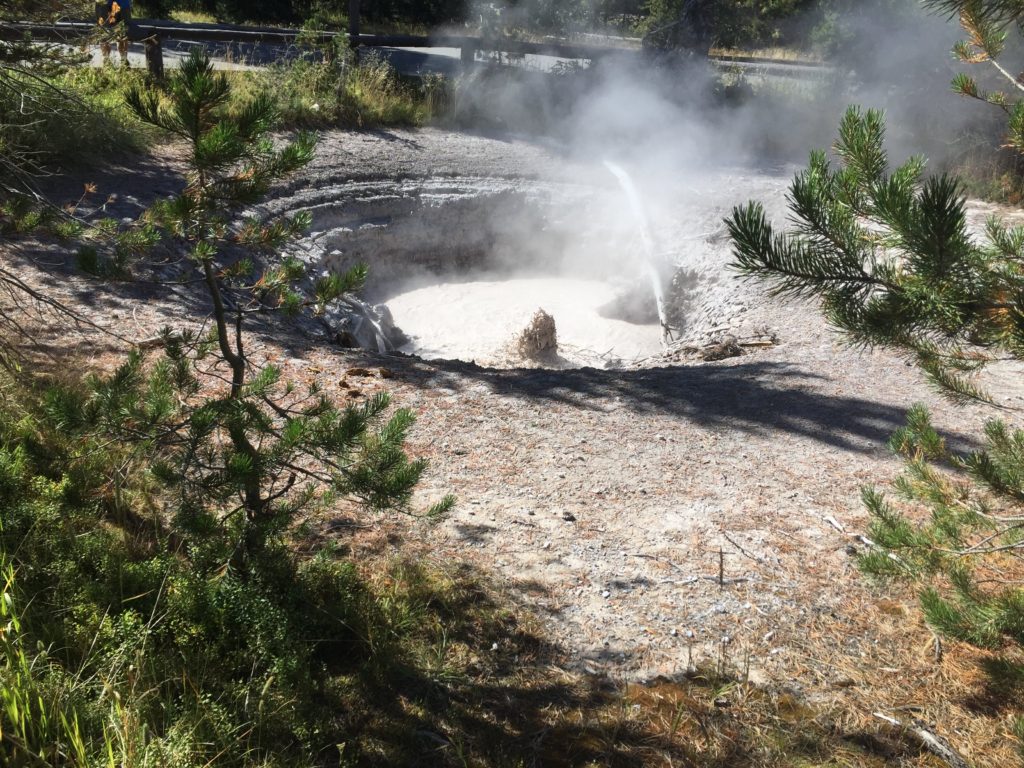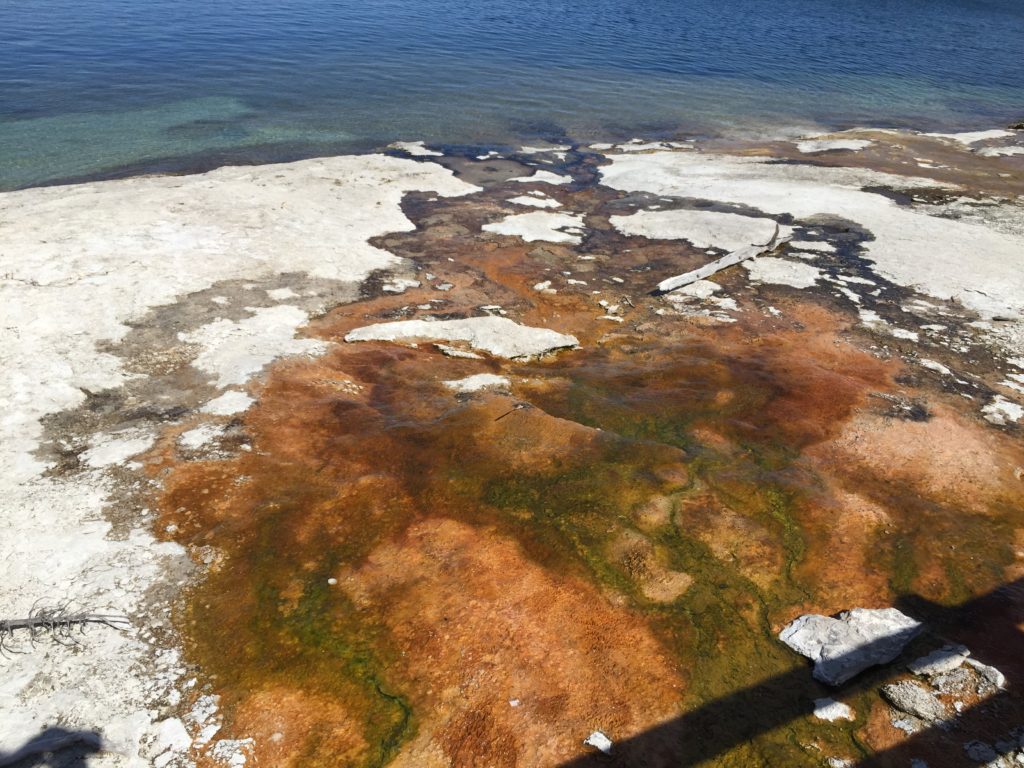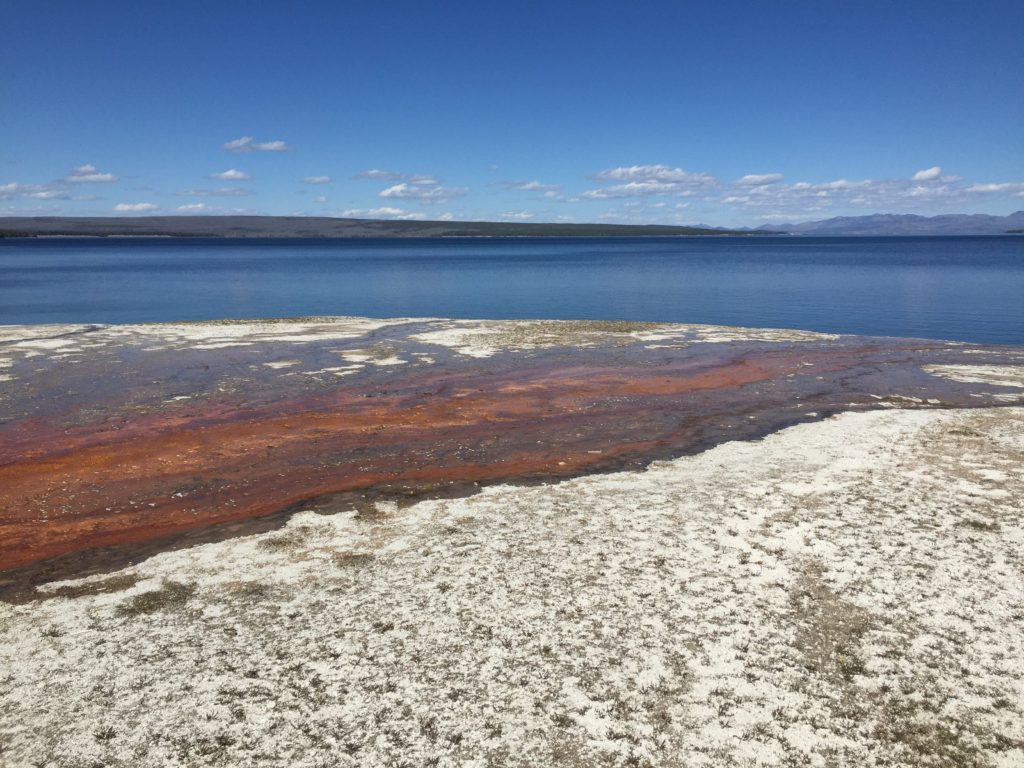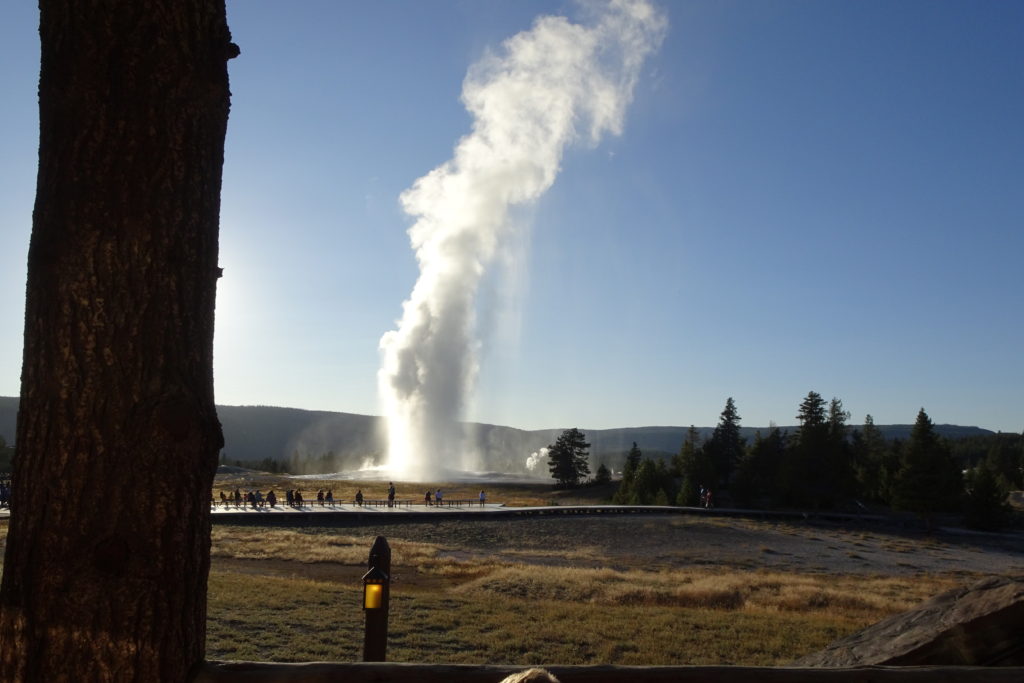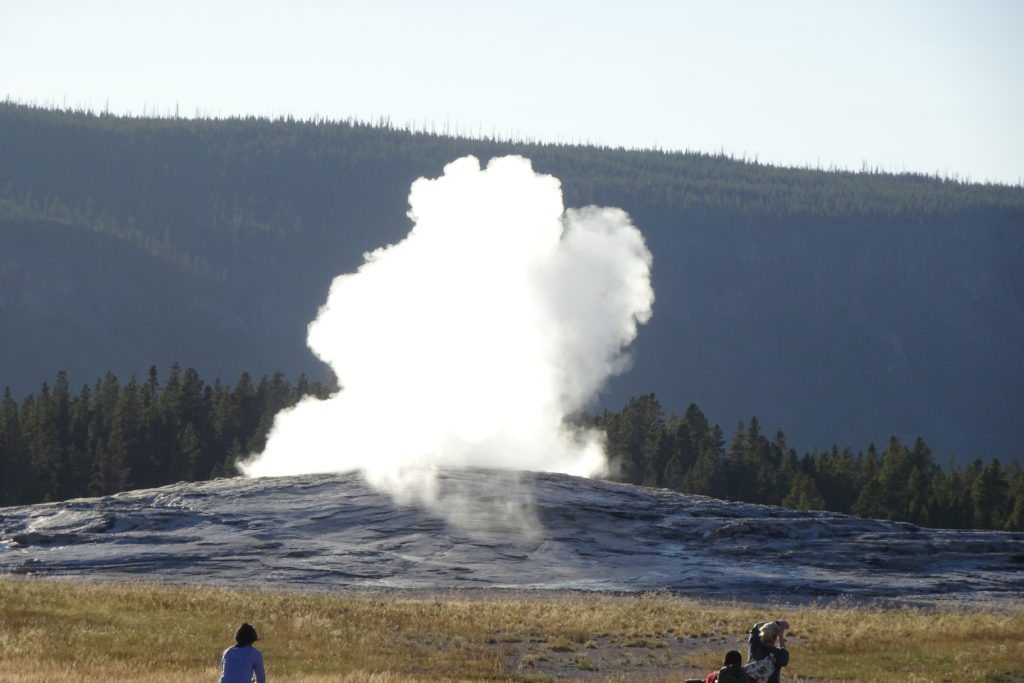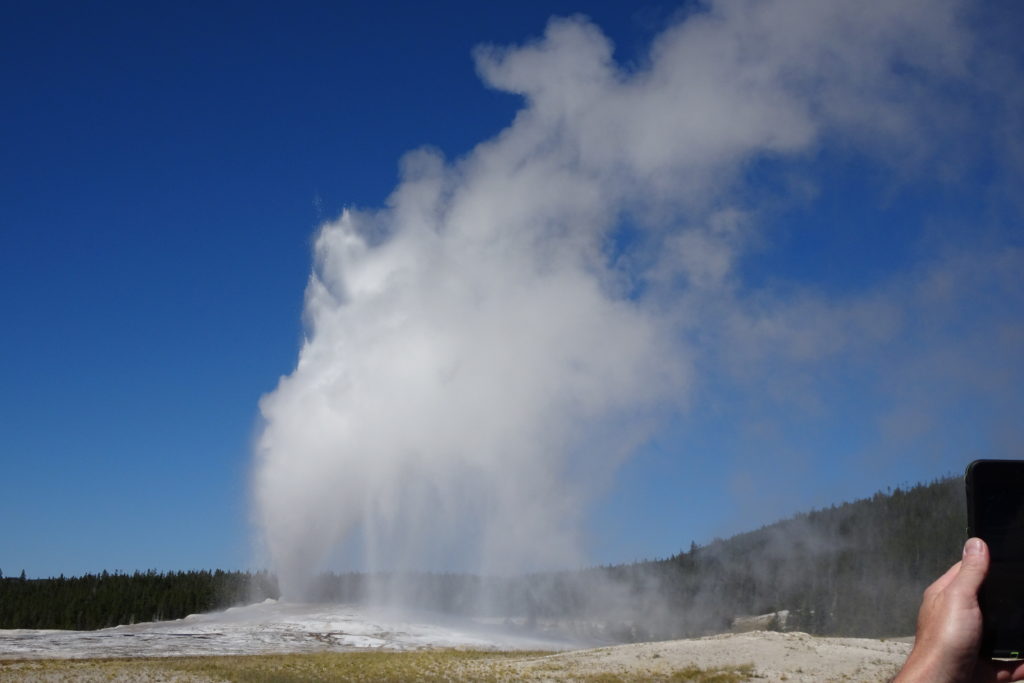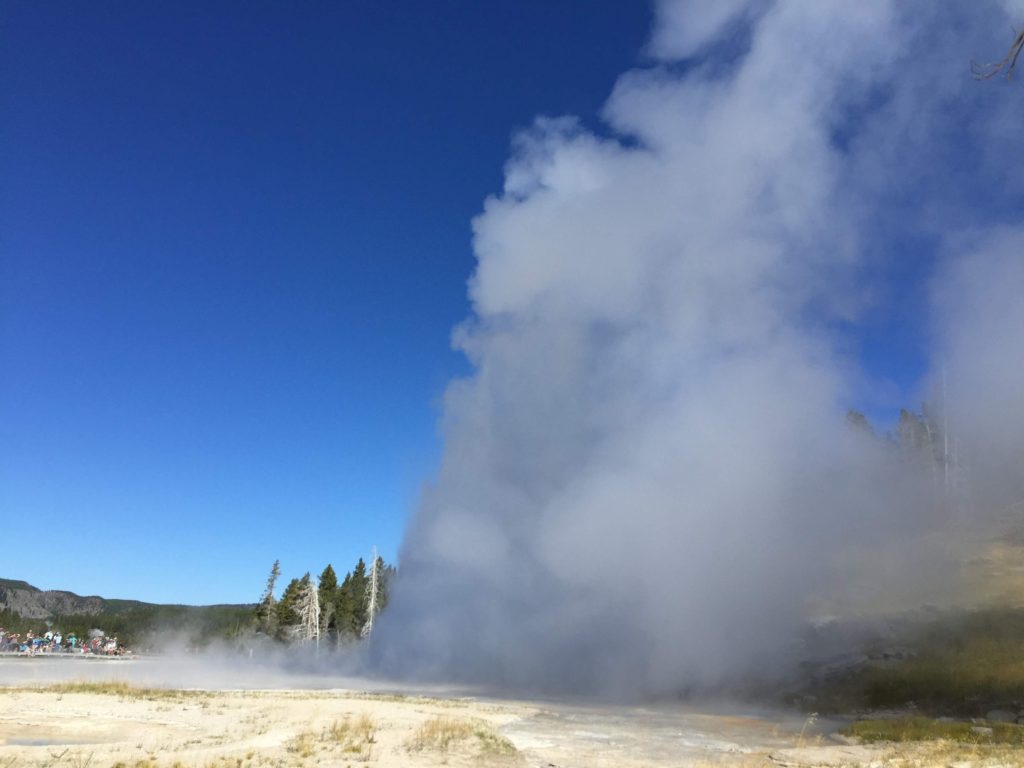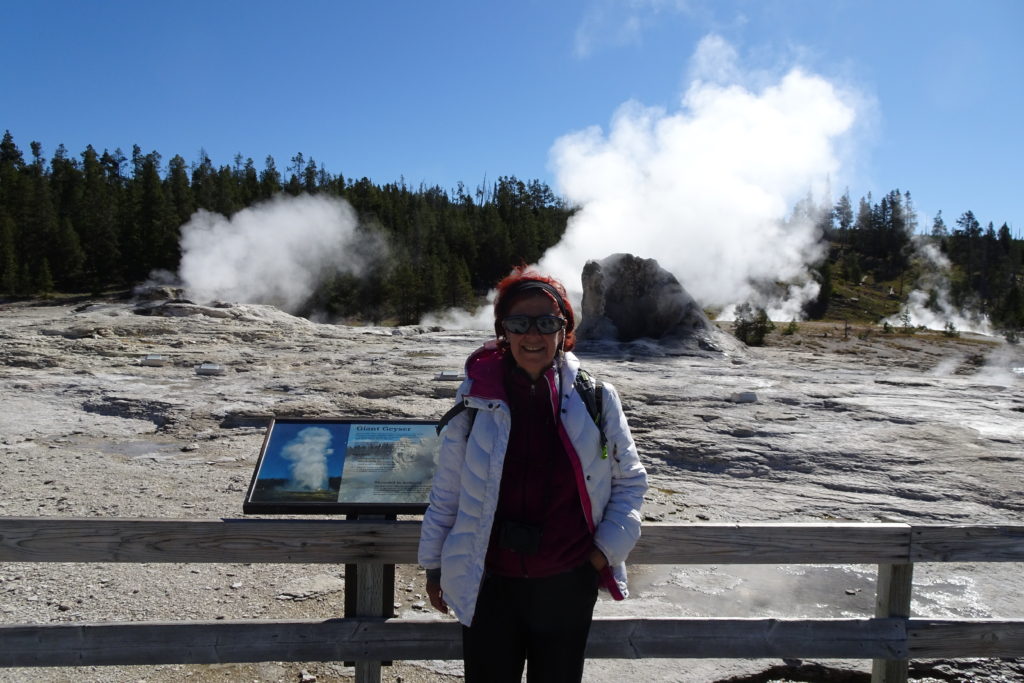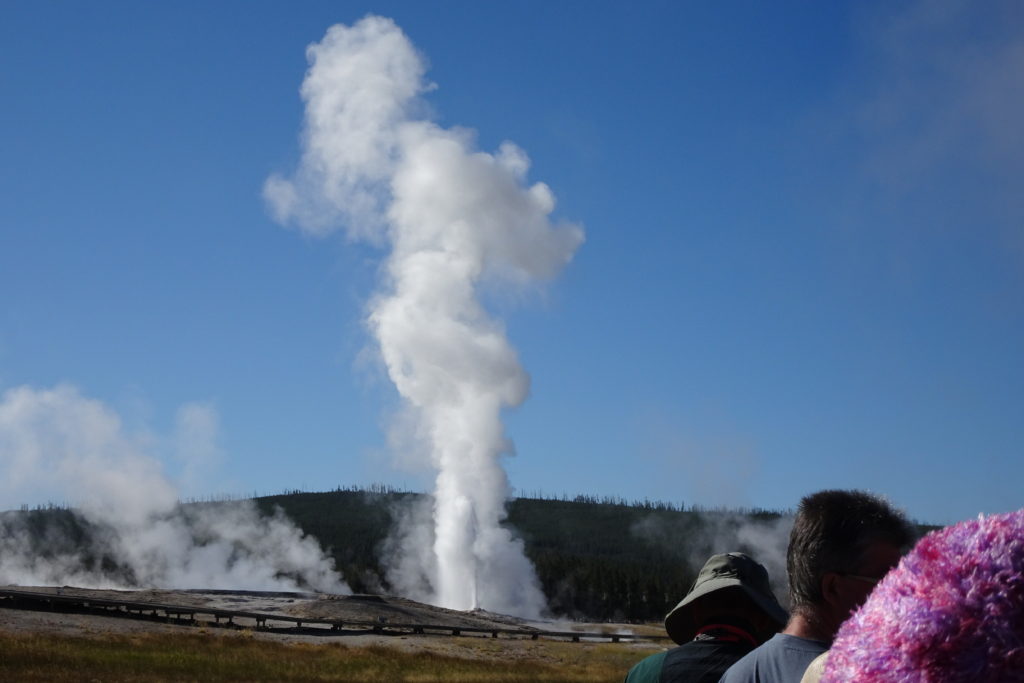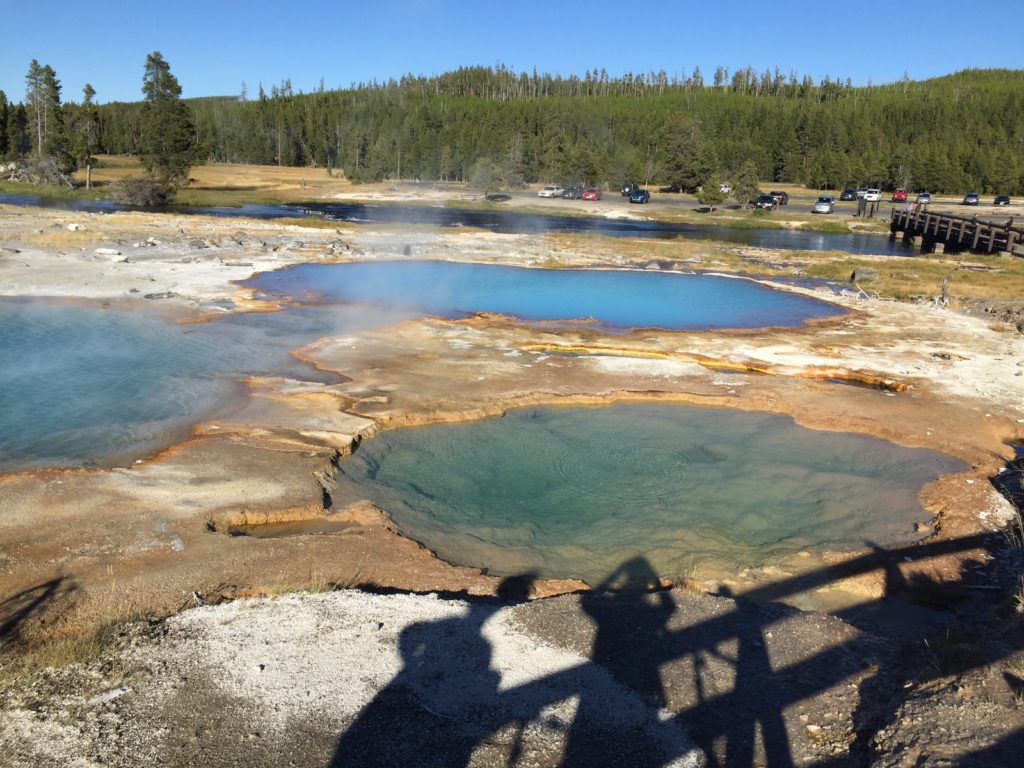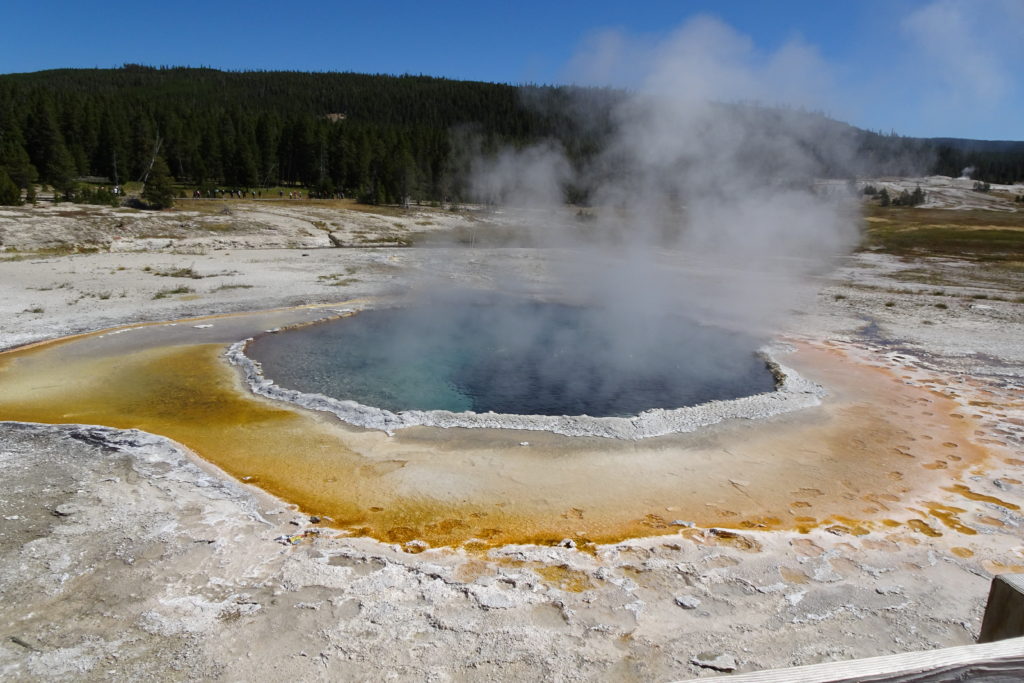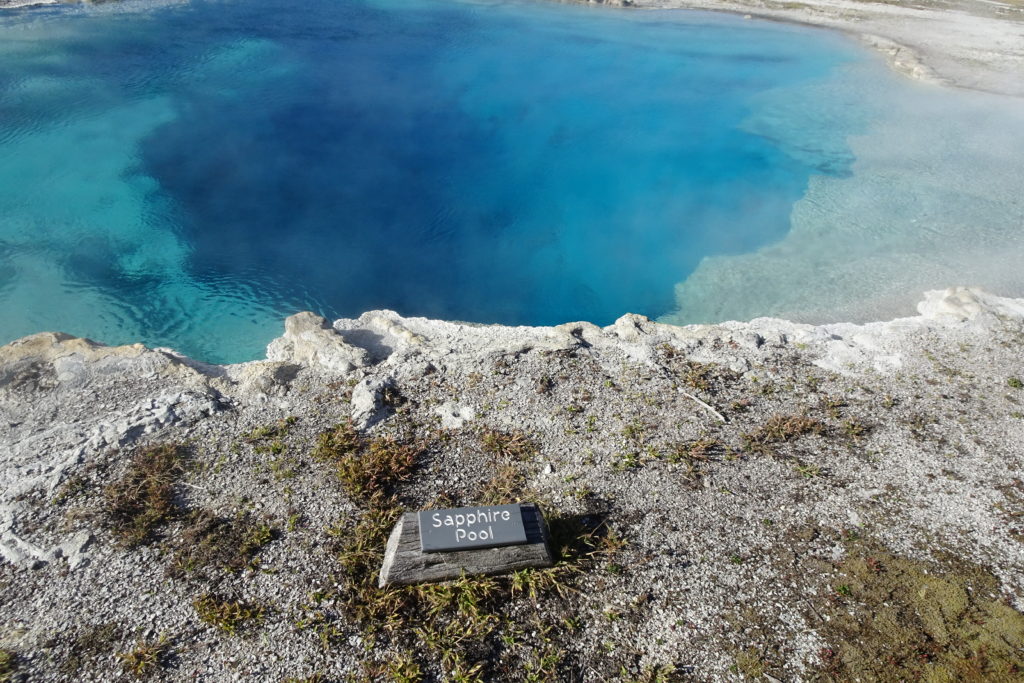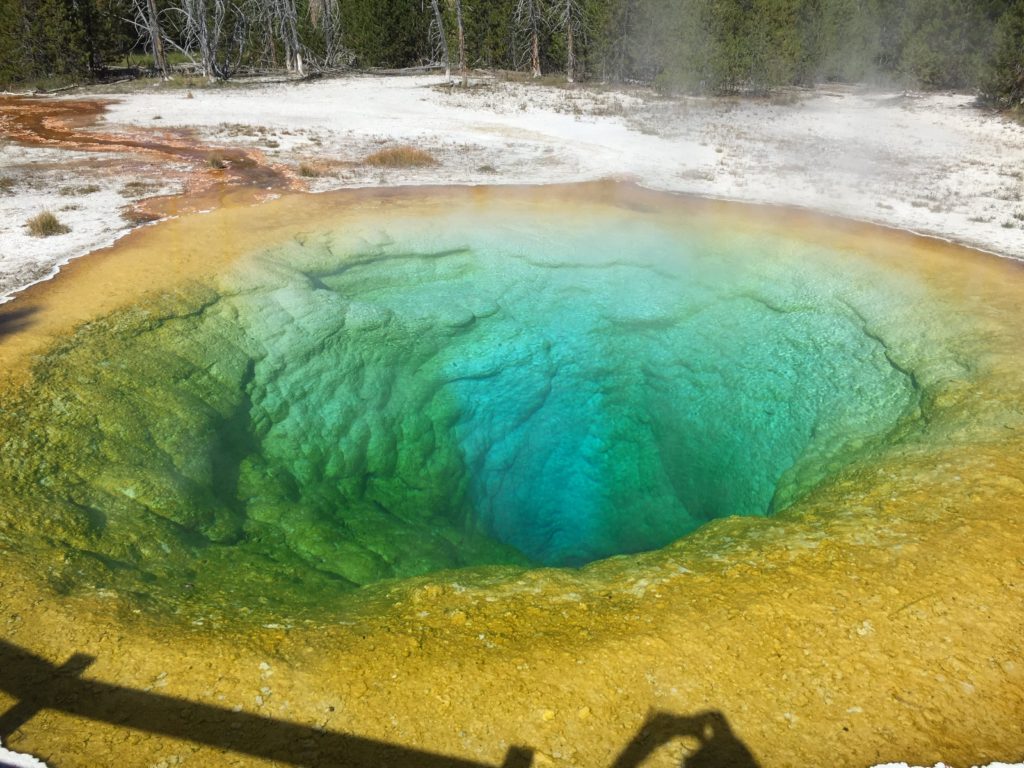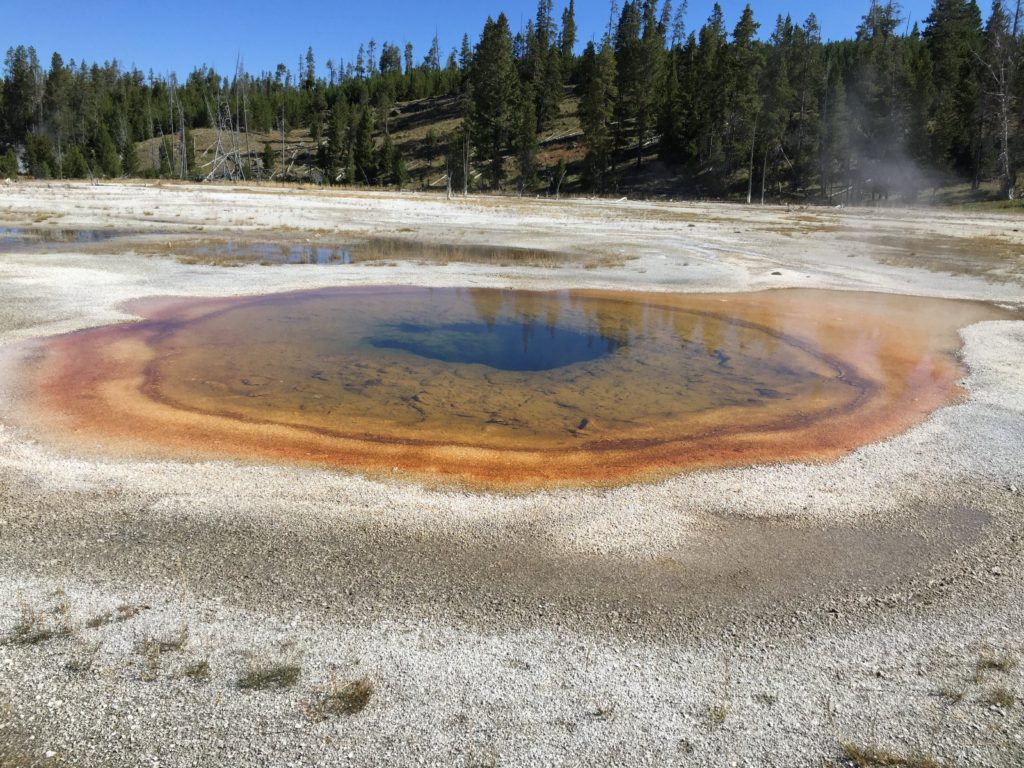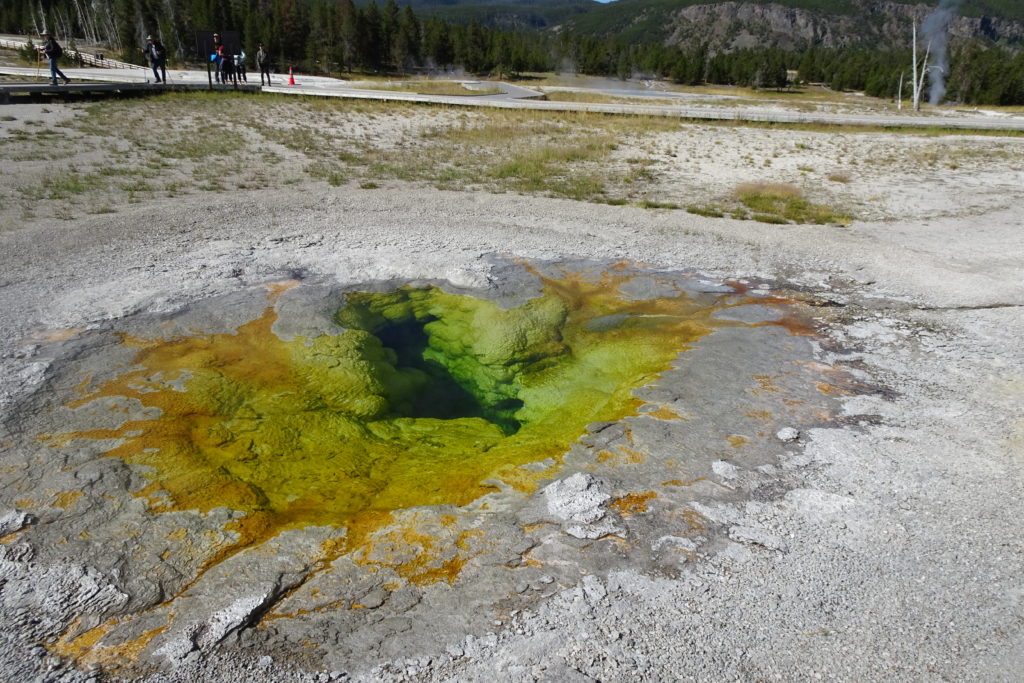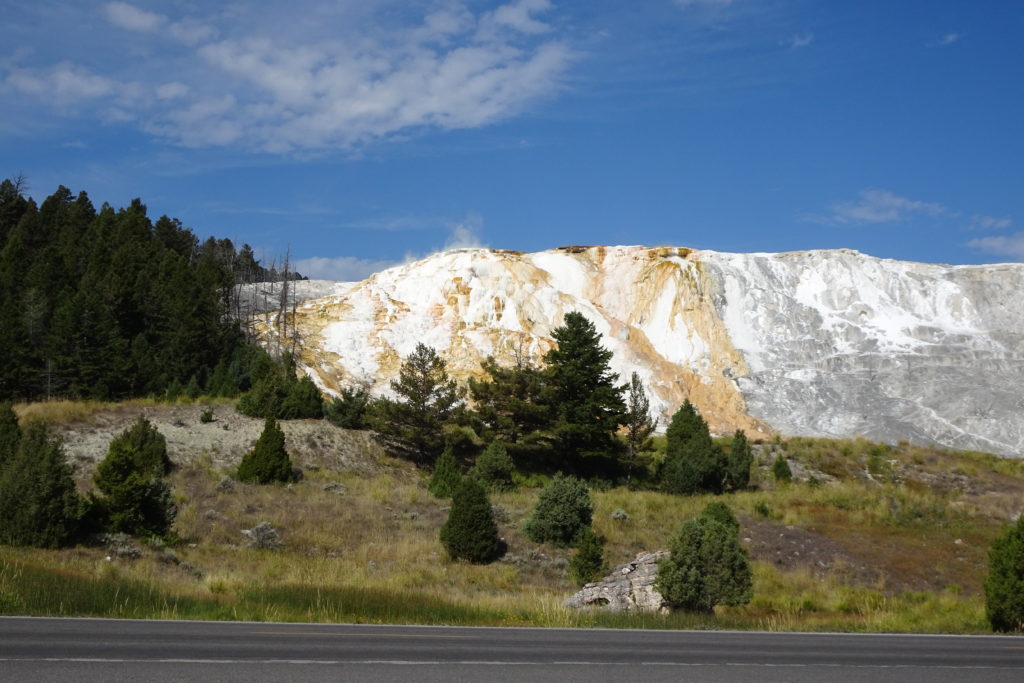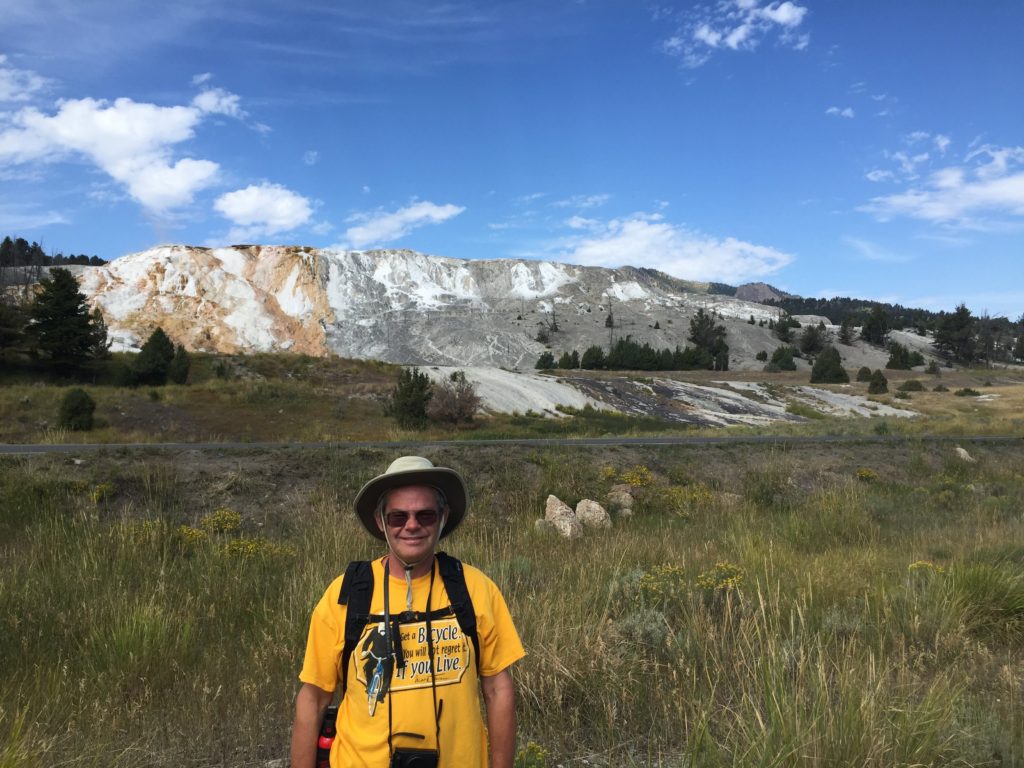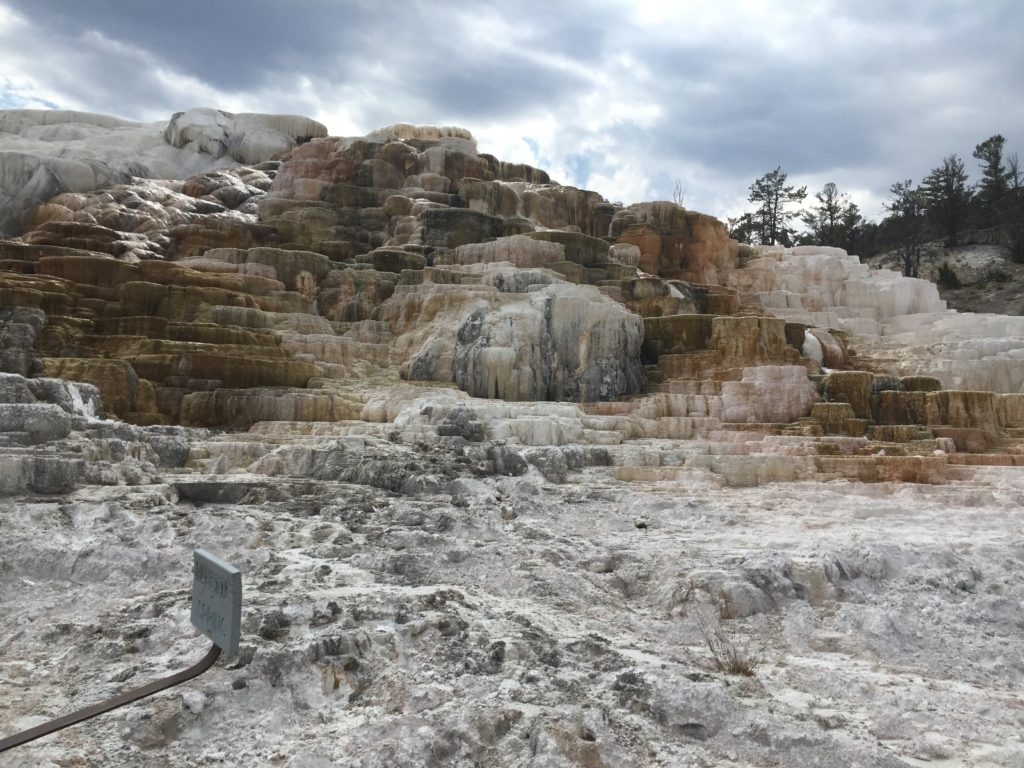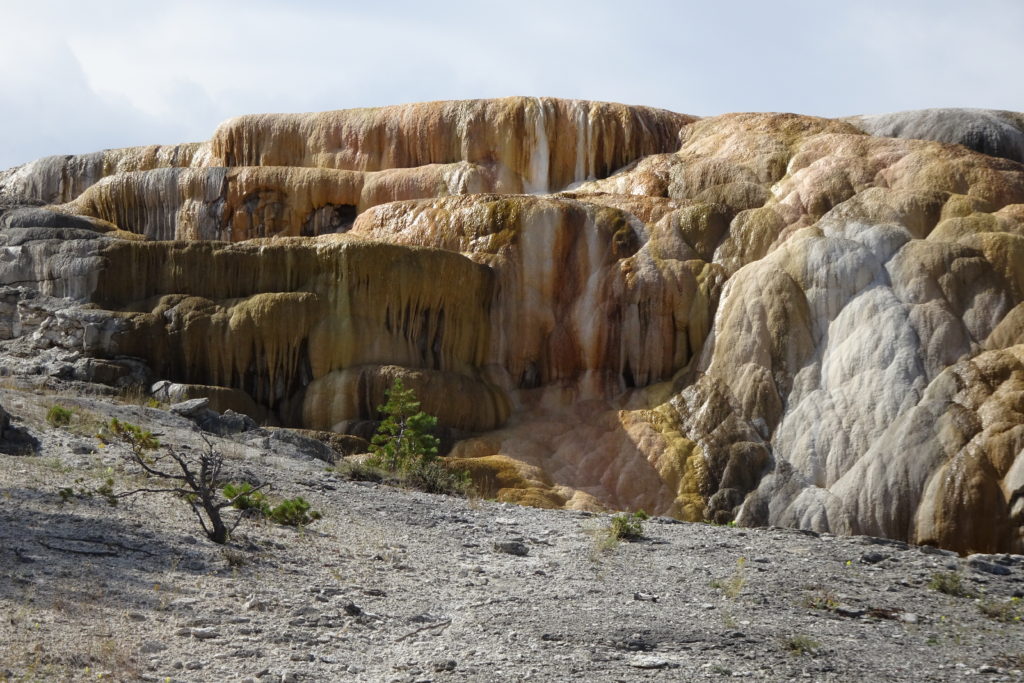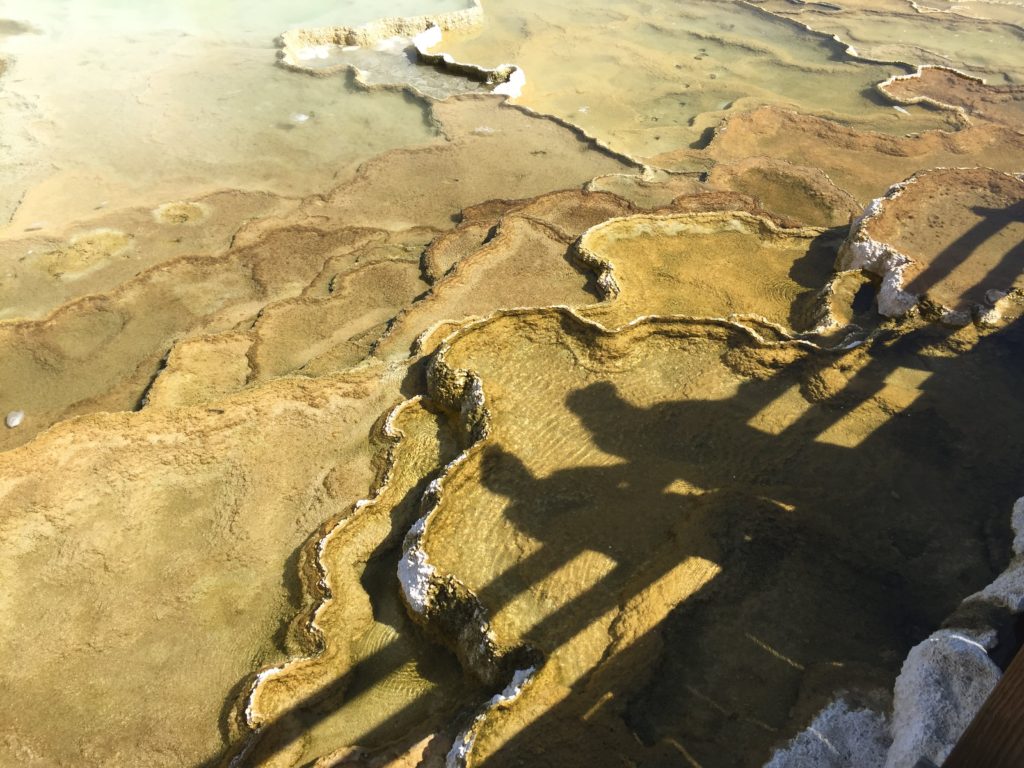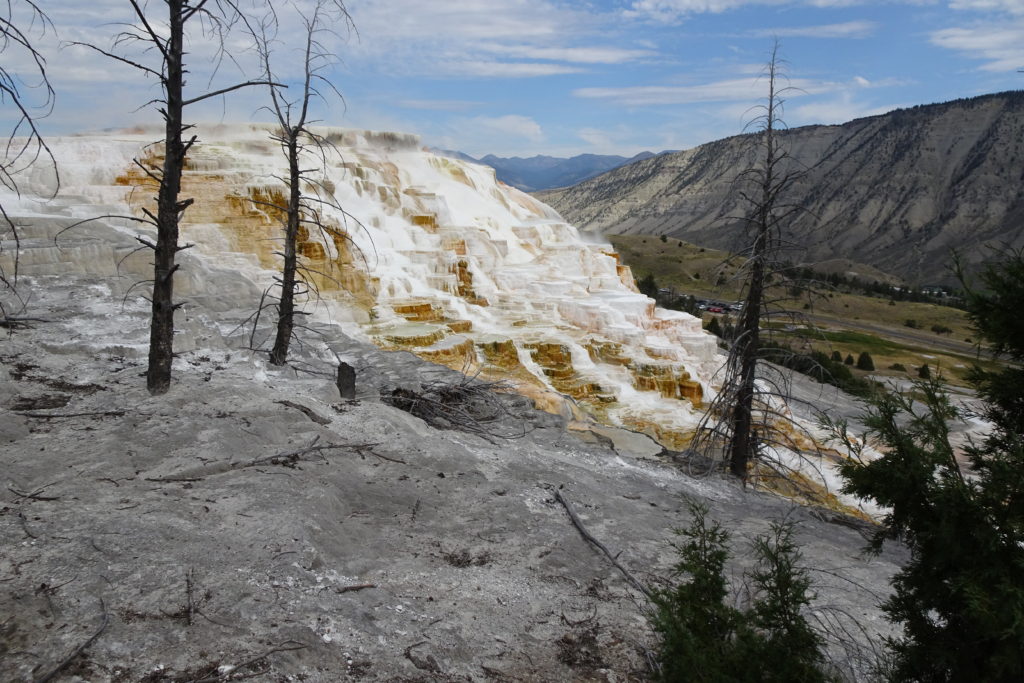Although we heard that it is necessary to get reservations in Yellowstone 6 months in advance, we did not try to get a campsite until we were sure of our arrival date. With incredible luck, we were able to get a campsite at exactly one week’s notice. (We avoided the weekend, although that may not have been necessary.)
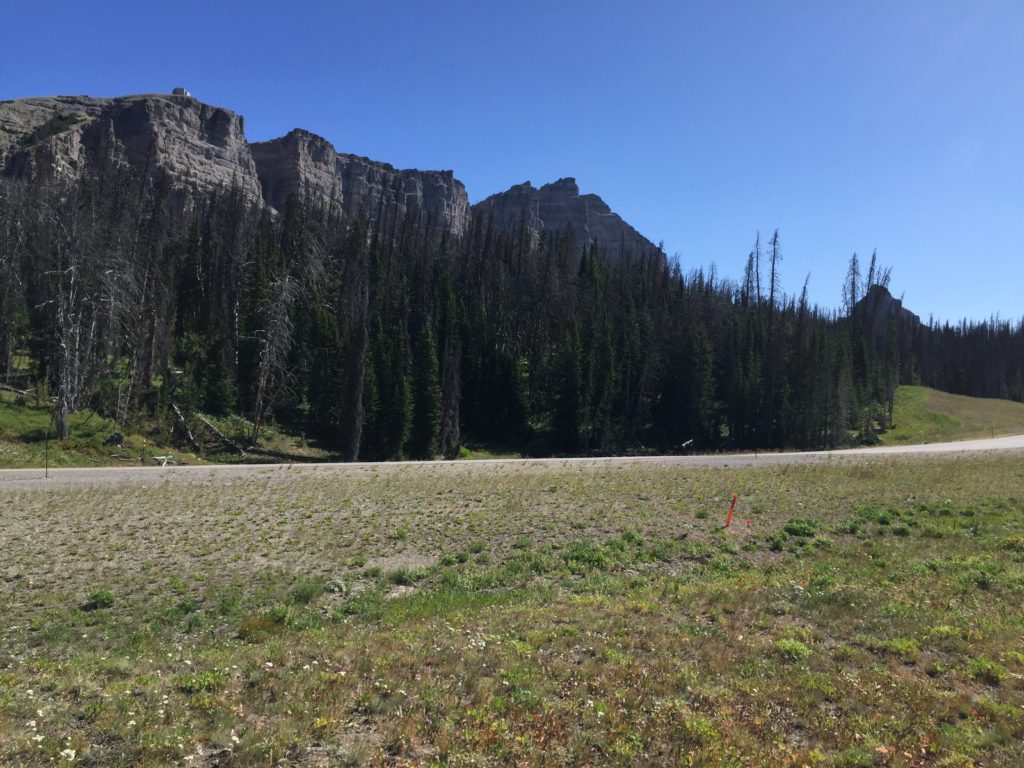
Since check-in is at 2:00, we took a leisurely drive from Dubois through the north end of Grand Teton National Park and then into Yellowstone.
The scenery in the Tetons is wonderful, with huge rock walls rising above the forest.
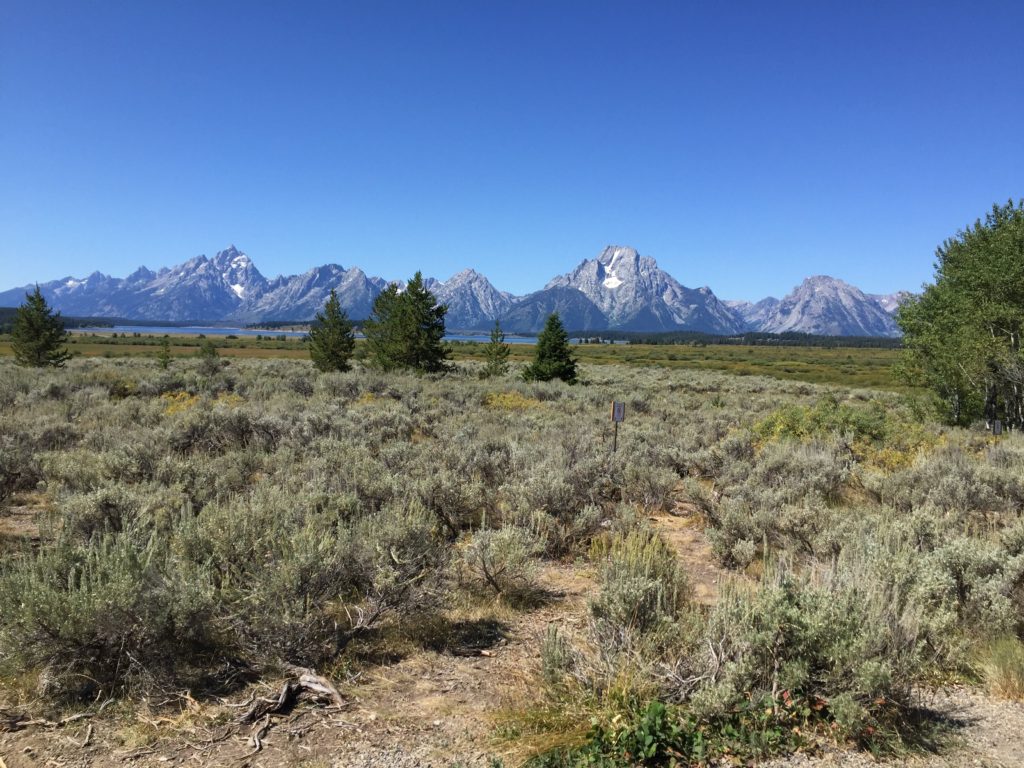
I am out of adjectives, since every vista seems more magnificent than those previous (and that continues throughout the trip). We mostly drove through with a few rest stops, and a brief aside to visit a waterfall.
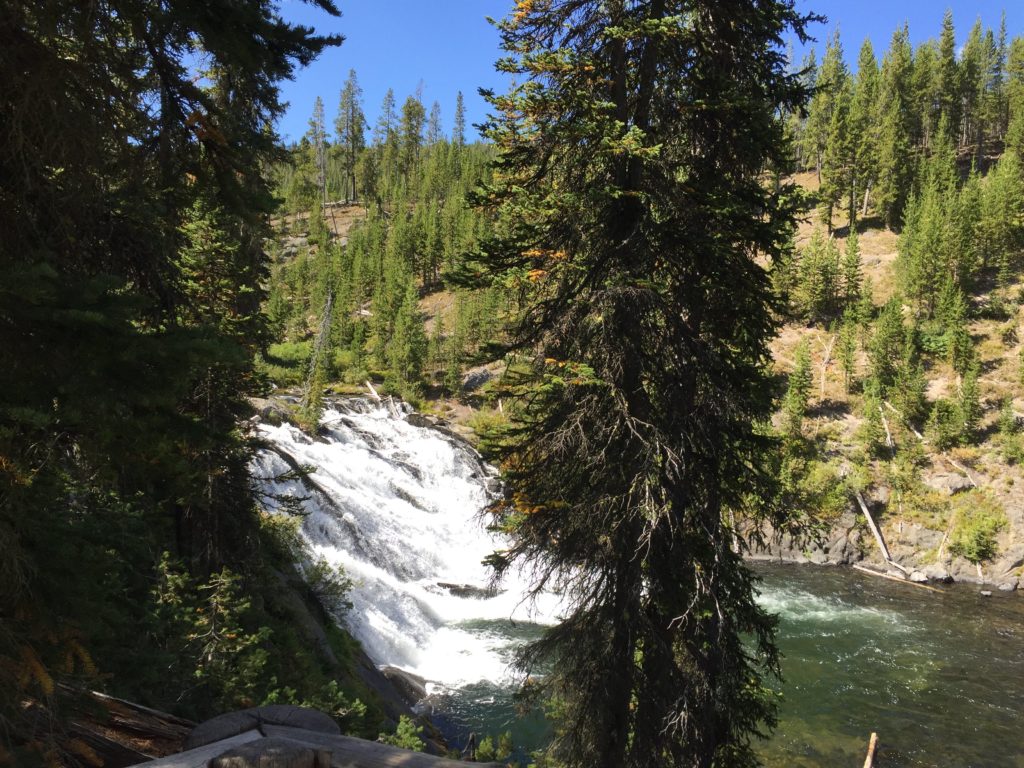
Arriving at Yellowstone, we were able to quickly register for our campsite at Bridge Bay on the shore of Yellowstone Lake. We were in the furthest of the 8 campsite loops, which gave us a quiet, wooded spot (although a slightly longer drive to the attractions).
To get to Bay Bridge, we had to pass the West Thumb Geyser Basin. Once we found our campsite, we went back to West Thumb and saw our first thermal features – hotsprings, mudpots and fumaroles. West Thumb is a bay on Yellowstone Lake.
The Yellowstone volcano is responsible for the thermal features of the park, as well as much of the terrain. However, multiple eruptions and collapses have led to a complicated set of ridges and lakes. The first eruption which took place 2.1 million years ago was one of the largest eruptions known on earth. West Thumb Geyser Basin is the result of a fairly recent event — about 174,000 years ago. The caldera from this eruption collapsed to form the bay. The area is full of hot springs, mudpots and fumaroles, many of which are under the water. The hottest springs on land are too hot even for extremophile bacteria. Due to minerals and the lack of life, the water appears turquoise. Due to the altitude, water boils about about 200F, and some of these springs are boiling. Where the water is somewhat cooler (I think the guide said 176F or lower) colorful extremophiles thrive — many are rust colored or yellow and at even cooler temperatures they may be green. There are also lots of pools of boiling mud.
The exact location of the hot spots is unstable, as is the behavior of the features. Apparently the park wildlife is attuned to the dangers, as we saw lots of animal tracks among the thermal features. Tourists are not so attuned. This is why the occasional unwary tourist who steps off the paths for a photo may get scalded. Deaths are not unknown. The park visitors we saw were much more respectful of the signage than one finds in a typical park.
Having satisfied our most immediate need to see hot springs, we returned to our campsite and finished supper in time to go to the ranger talk. This was about the early exploitation of the park by American entrepreneurs. The encouraging thing was that the government created the national park as soon as the unique features of the area were discovered. (It was apparently the first national park in the world.) However, the “opening” of the park to tourism was subject to the usual mix of ambition, fraud and greed.
The talk ended after dark and so on our walk back to the campsite we were able to enjoy the full splendor of the night sky. It was absolutely clear, far from any town and 7000 feet above sea level. Not only was the Milky Way visible, it looked like a trail of bright glitter. Even in northern Ontario I don’t recall seeing so much detail. Even without the other glories of Yellowstone, it would have been worth going there just to see the night sky.
In the morning we awoke early in the hopes of seeing the park’s famed wildlife along the road to the Old Faithful Geyser field. In fact, when we work up, there were several elk grazing among the campsites. However, we learned later that the other wildlife are found at specific locations in the park at each time of year and the road to Old Faithful is not a prime wildlife area.
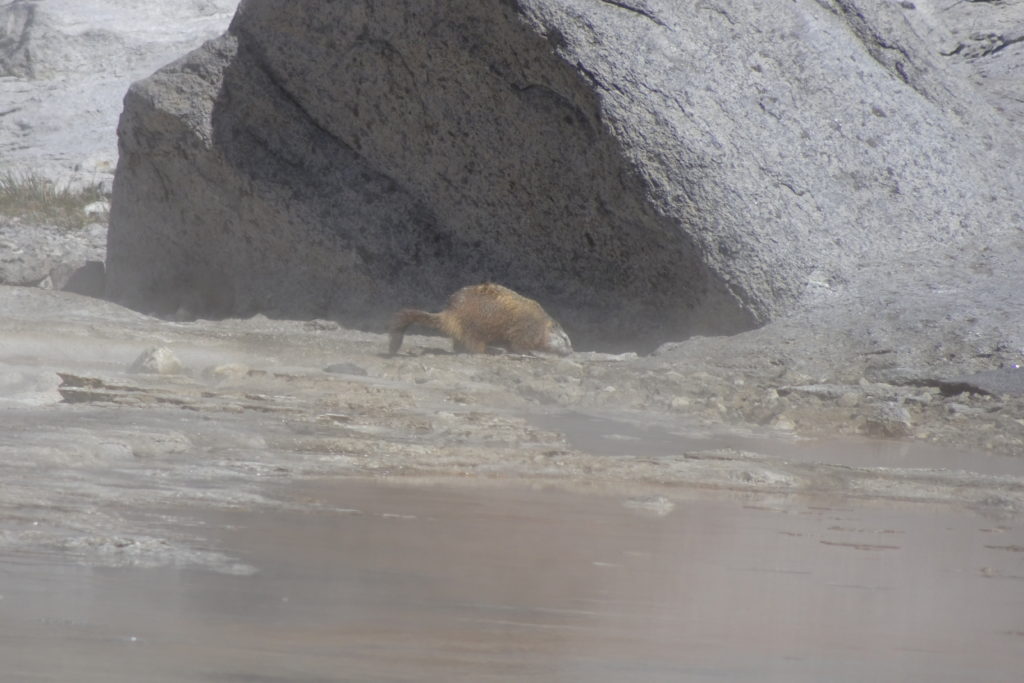
We got to Old Faithful in time for a park ranger hike. The ranger took us to various hot springs and geysers and explained the colors of the pools, the predictable and unpredicable geysers and some of the geology. During the walk we saw one of the Lion Geysers erupt. After the hike, we continued along the trails to see some of the other notable features. We then went back to the Grand and Turban Geysers, which which erupted quite spectacularly in the predicted window, to the oohs and ahhs of hundreds of tourists. We were quite amazed when, seconds after the eruptions ended, a marmot walked calmly to the mouth of the geyser. We then went to the Old Faithful viewing area and watched it go off, again pretty much at the predicted time. The photos above are of the 3 geysers. Old Faithful is top left.
Some of the hiking trails were posted for bicycle use, so we pulled out the bicycles and went for a ride up to the smaller Biscuit Geyser field, where we saw yet more hotsprings. The trail follows the Firehole River, which has many hot springs and fumaroles on its banks. The photos above show some of incredible colors which are due to dissolved minerals and the extremophile bacteria which grow in the water (when it is not too hot).
After our bicycle ride we decided to have supper at the Old Faithful Restaurant. The dining room has a porch that just happens to overlook Old Faithful. We hung out until the predicted eruption window had passed with only a few minor snorts. Since eruptions are occasionally small, I figured that was all and went off to buy a few souvenirs. And so I caught only the tail end of the biggest eruption of the day.
We returned to the campground in time for another ranger program, again about the American history of the park. This time it was about the 3 government expeditions sent to explore the park and report back. The landscape in the park is so bizarre that I suspect that their reports were met with a healthy dose of skepticism.
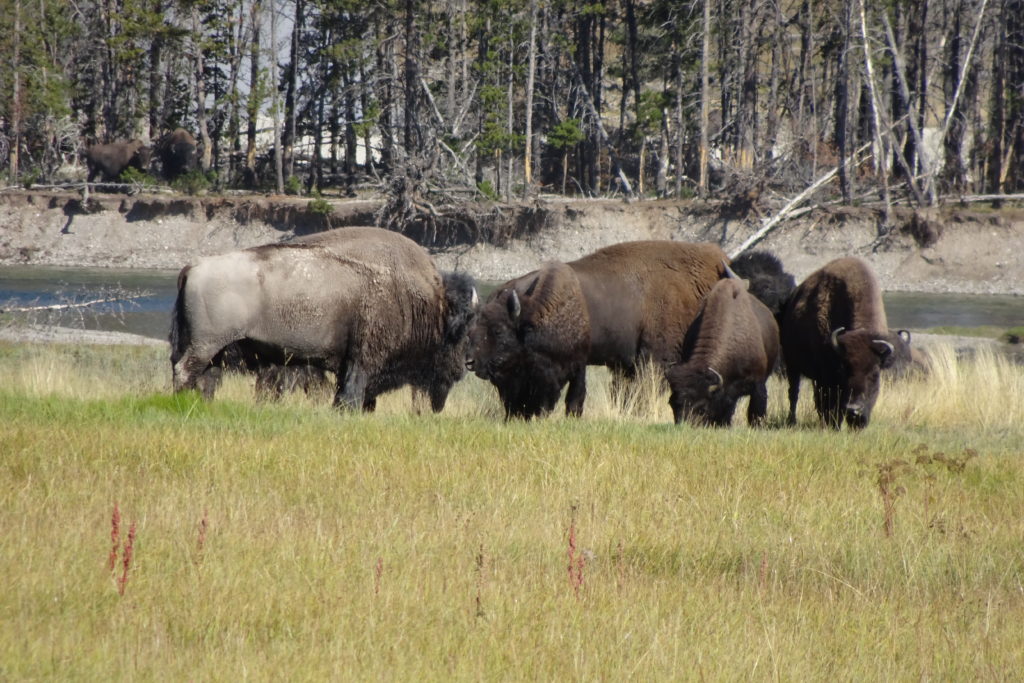
On Wednesday we headed to Yellowstone Canyon. Getting there took us through the Hayden Valley, which is the home of one of the large bison herds in the park. After our initial excitement at catching our first glimpse of a bison, we realized that we were going to see many more bison, much closer than expected.
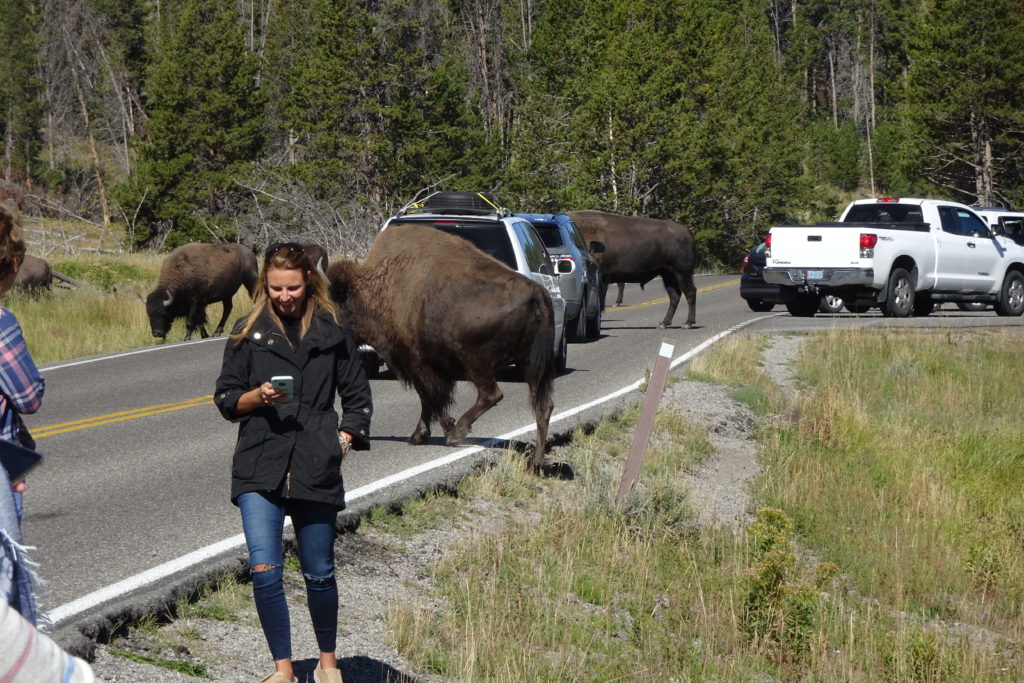
We stopped with a group of tourists to watch a group of about 20 animals on the other side of the Yellowstone River. After about 20 minutes, we realized that the herd was crossing the river and following one of the bulls along a path that led directly through the group and the parked cars to the other side of the road.
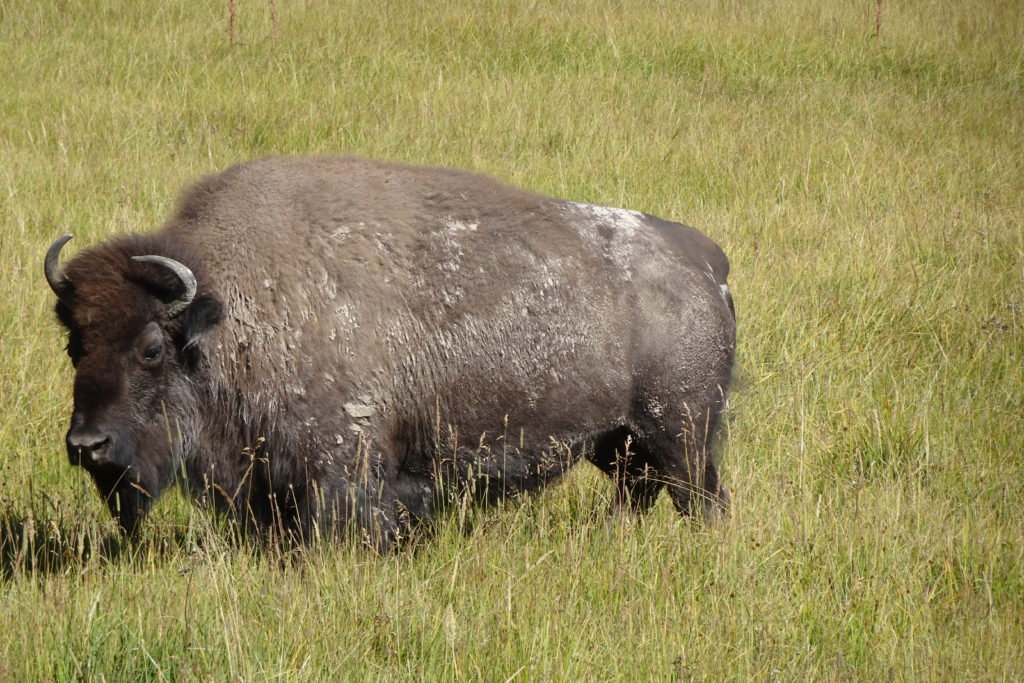
This was the first of many bison traffic jams that we were part of. During the next 3 days we were frequently so close to bison that if we opened the window of the van we could have petted one (inadvisable as this would have been).
The Yellowstone Canyon is spectacular. (Have I over-used that word recently?)
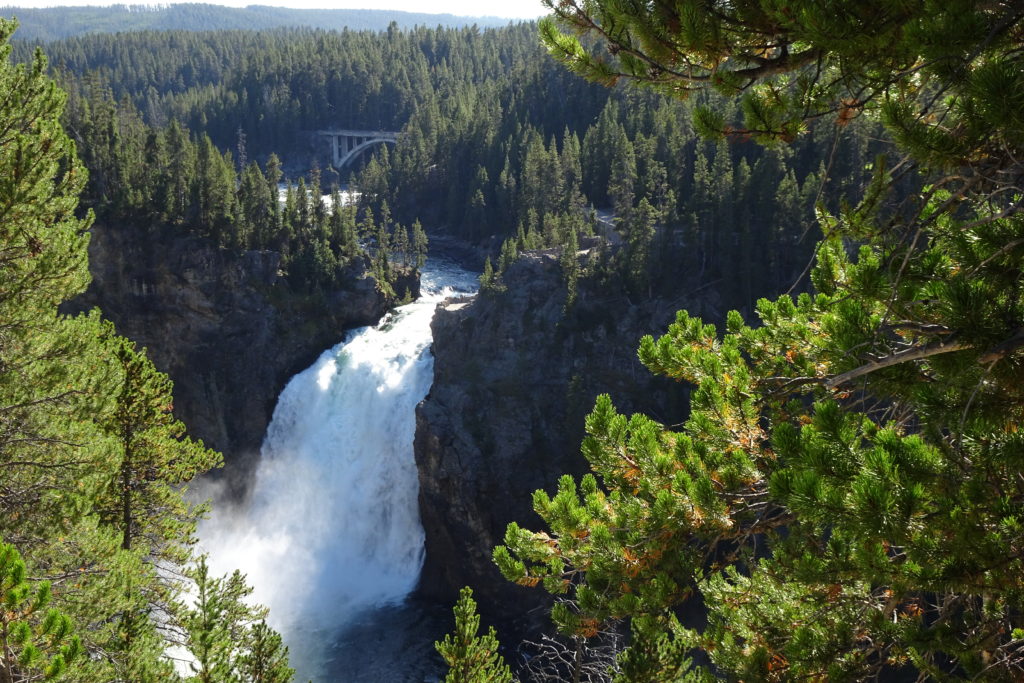
upper falls 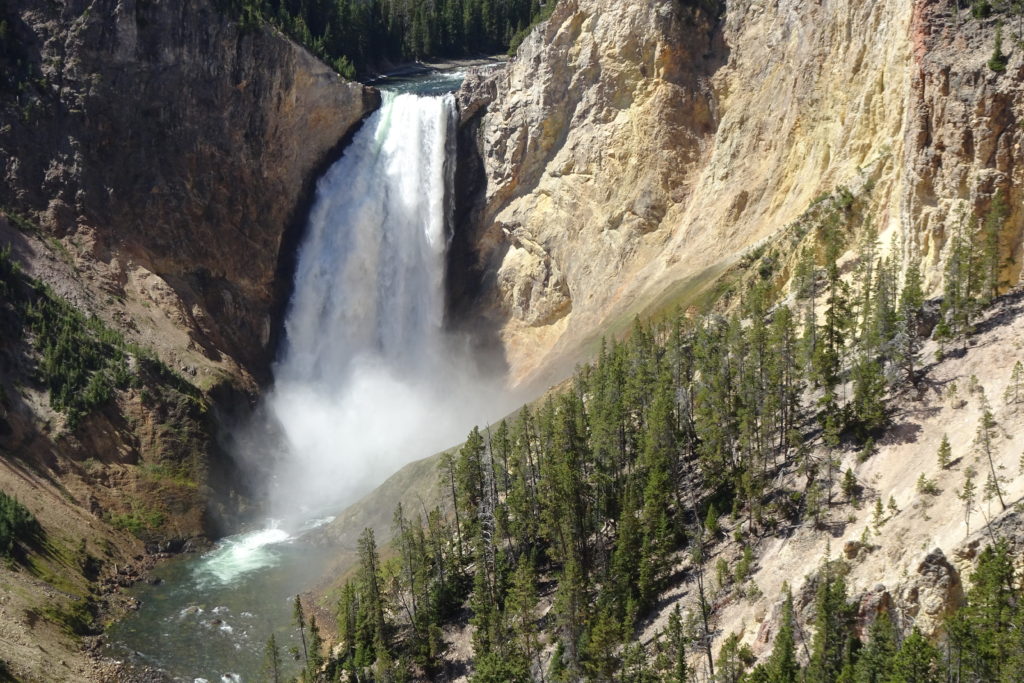
lower falls 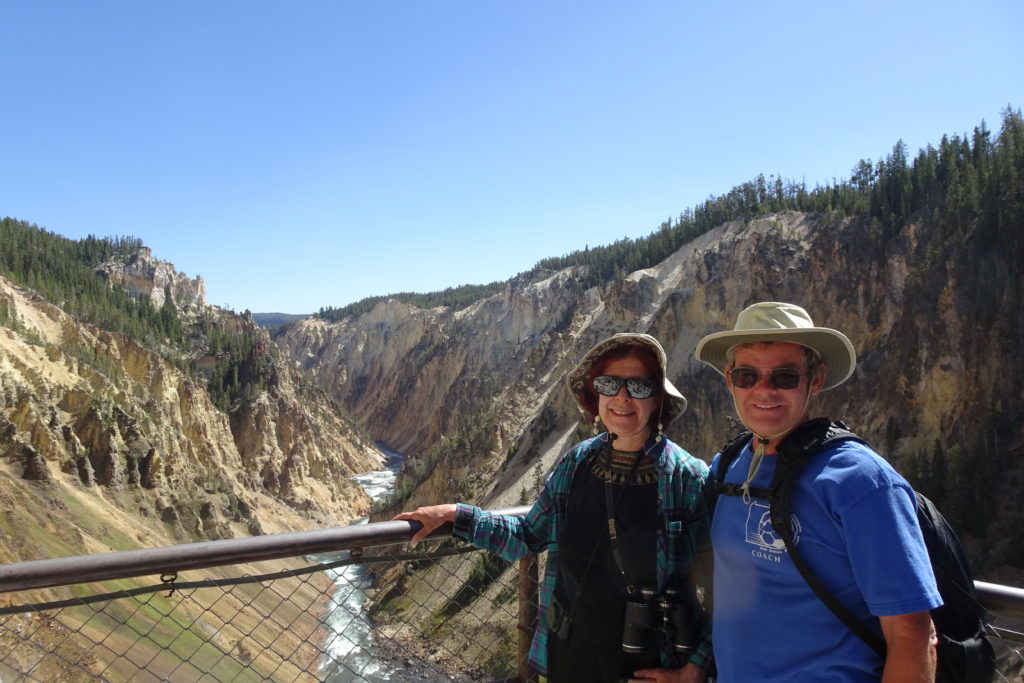
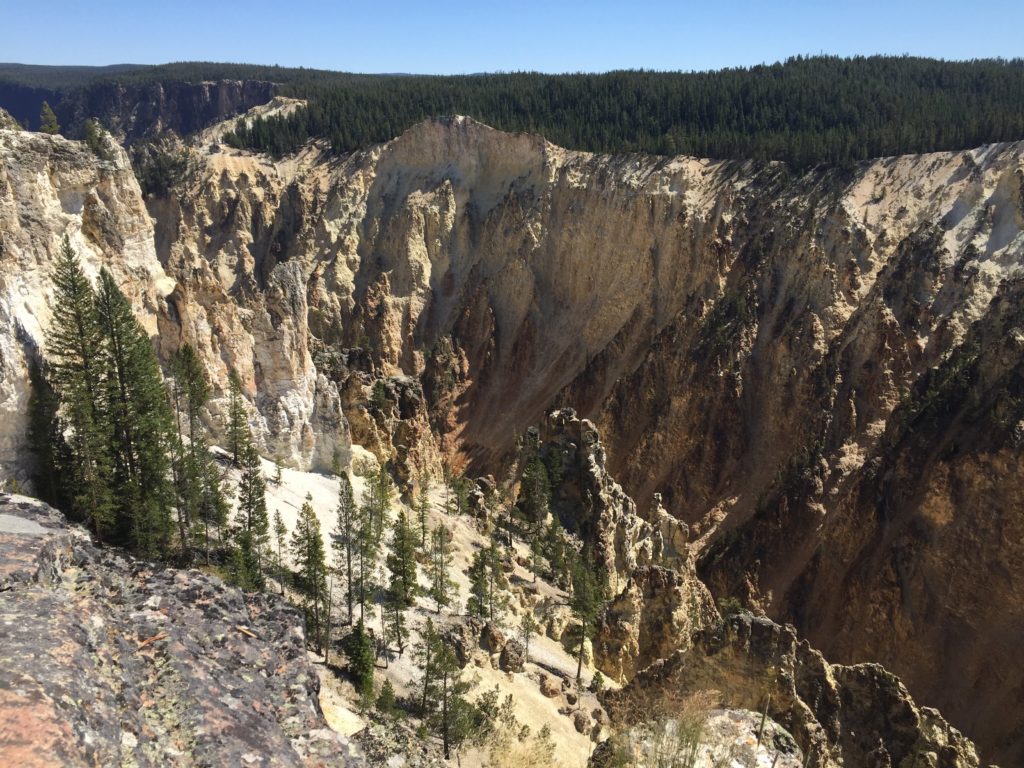
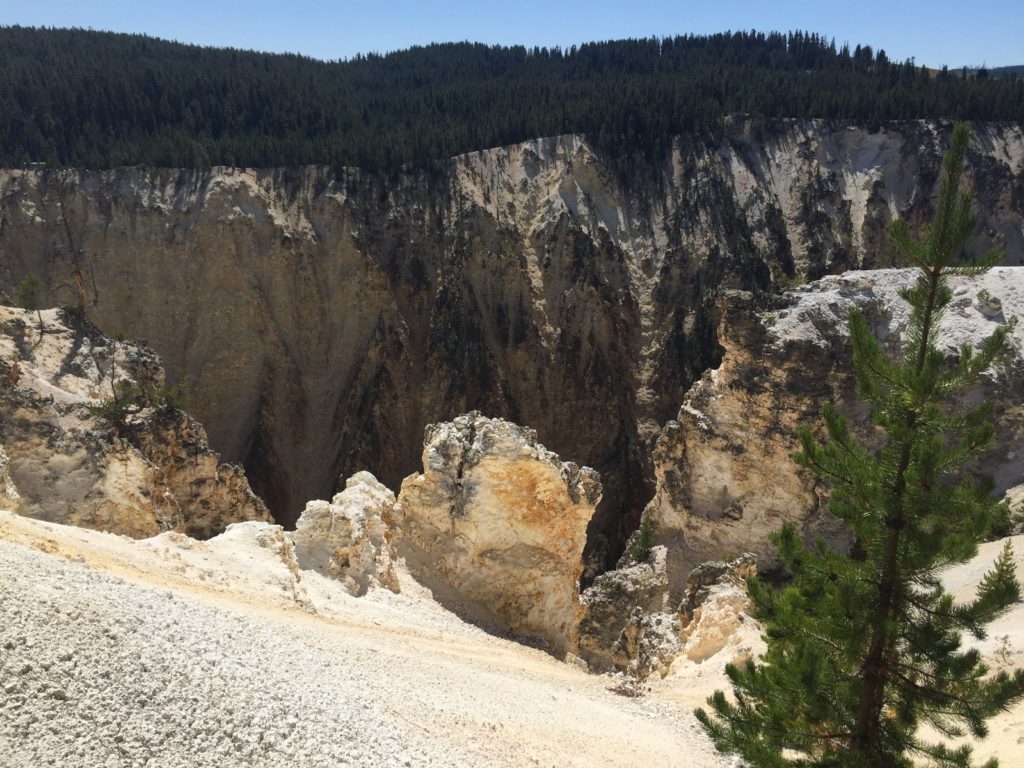
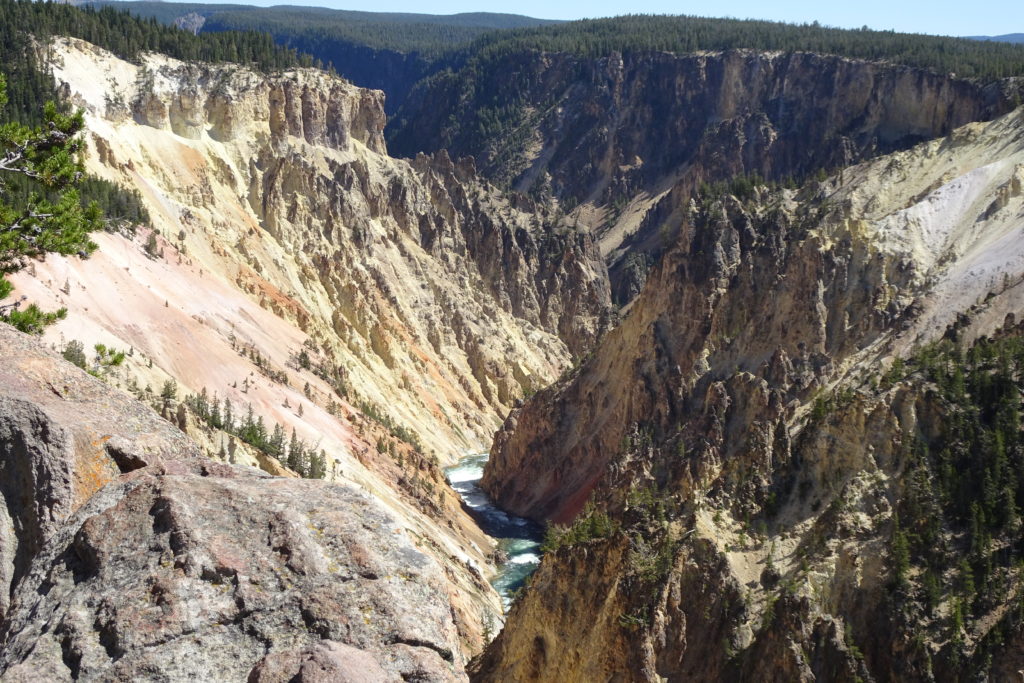
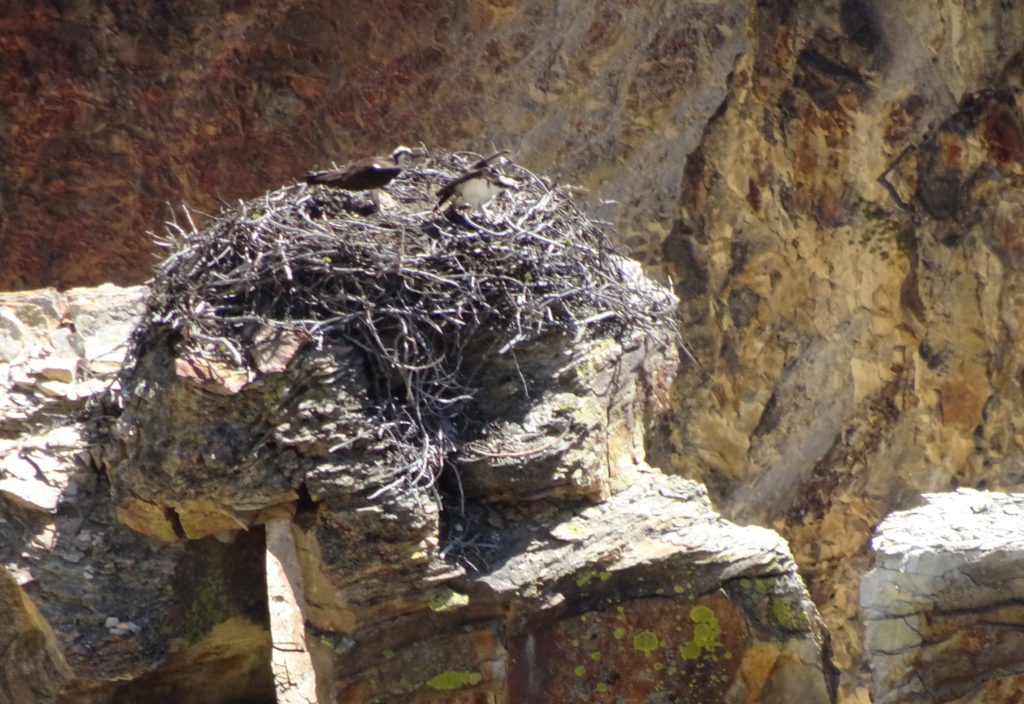
In some spots, fumaroles or hot springs break through. There are drives along both the north and south rims affording wonderful views of the waterfalls and canyon. At one point we looked down on an osprey nest and the nestlings.
There are 2 large waterfalls. Below the lower falls, the river has cut fantastic shapes and spires through volcanic ash, creating a surreal landscape.
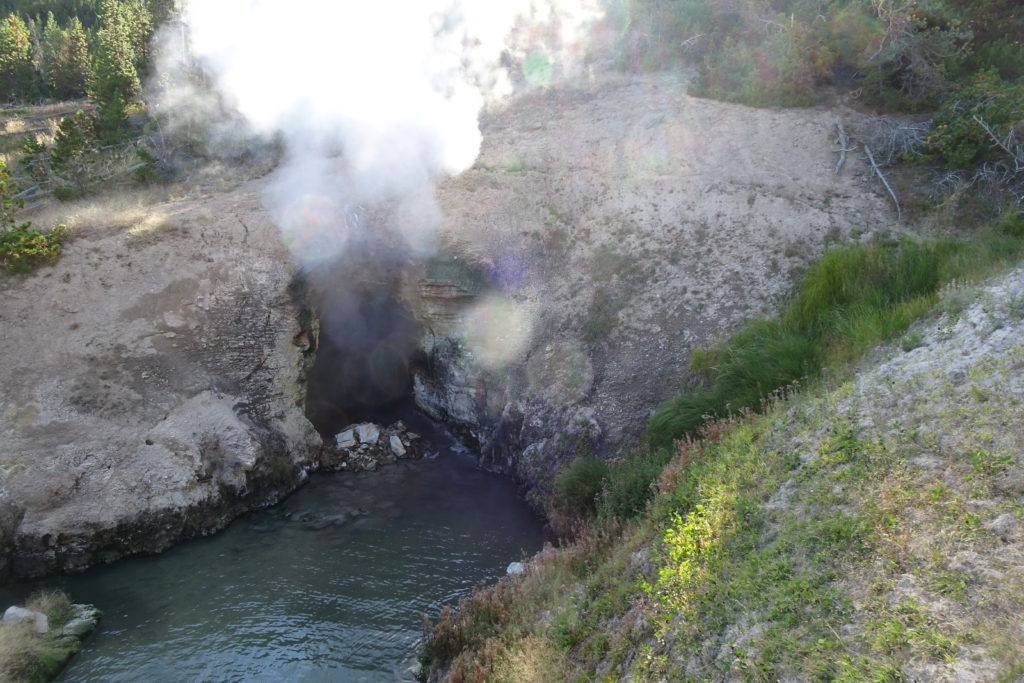
There are just too many interesting features of Yellowstone to see them all, or even start to describe the ones we did see. For example, Dragon’s Mouth Spring is a cave with a spring. Deep in the cave is a fumarole and the steam escaping from the cave makes a roaring sound.
The ranger talk for the evening was about wolves (and incidentally coyotes). We learned that wolves primarily prey on elk, and that the elk herd has been much healthier since the wolves were reintroduced. Winter is actually the best season for the wolves as the elk are bogged down in the snow, while the pursuing wolves just follow in the elk tracks. Apparently bison are just too smart and too aggressive for a wolf pack to handle. We also learned that grizzlies are not very energetic predators, preferring to chase off the wolves from their kills.
On Thursday we drove to Mammoth Hot Springs. This took us again through the Hayden Valley and its bison. Mammoth Hot Springs is probably my favorite park feature. The combination of mineral rich hot water and bacterial action created a huge terraced mound of travertine, some of it richly colored. We hiked several trails from the lower part of the springs, including a path that took us to the upper part. These trails circle around and up and down the entire mound.
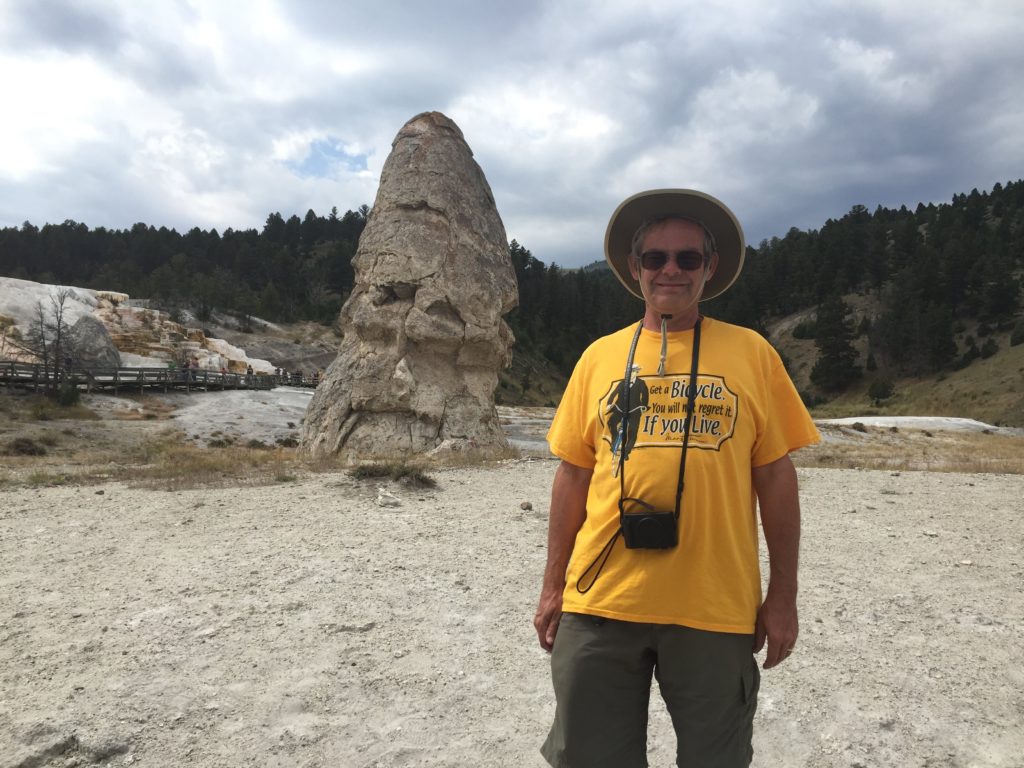
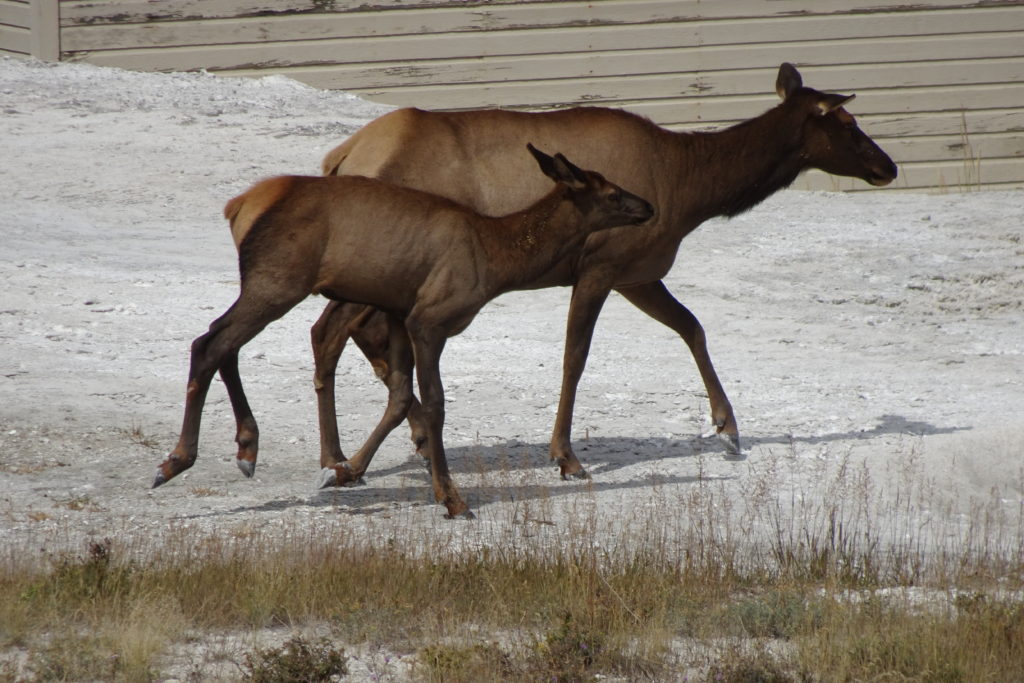
We also hiked the road around the upper part – a disappointing trek given that the most interesting features of the mile long circuit are just a few feet from the end.
We spent some time at the Mammoth Hot Springs Visitor Center, the only spot in the park with high speed internet. I had a tenure recommendation to file, and it definitely felt important to get it in on time.
On the way back from Mammoth, we stopped at the Norris Geyser field, to see the Steamboat Geyser, the largest active geyser in the park. It has been going off about twice monthly in the past year, and we saw only the smoking vent. Given more time in the park, we could have visited many other Geyer Basins. However, I suspect that interesting and colorful as they are, you have to be a real aficionado to visit all of them with enthusiasm.
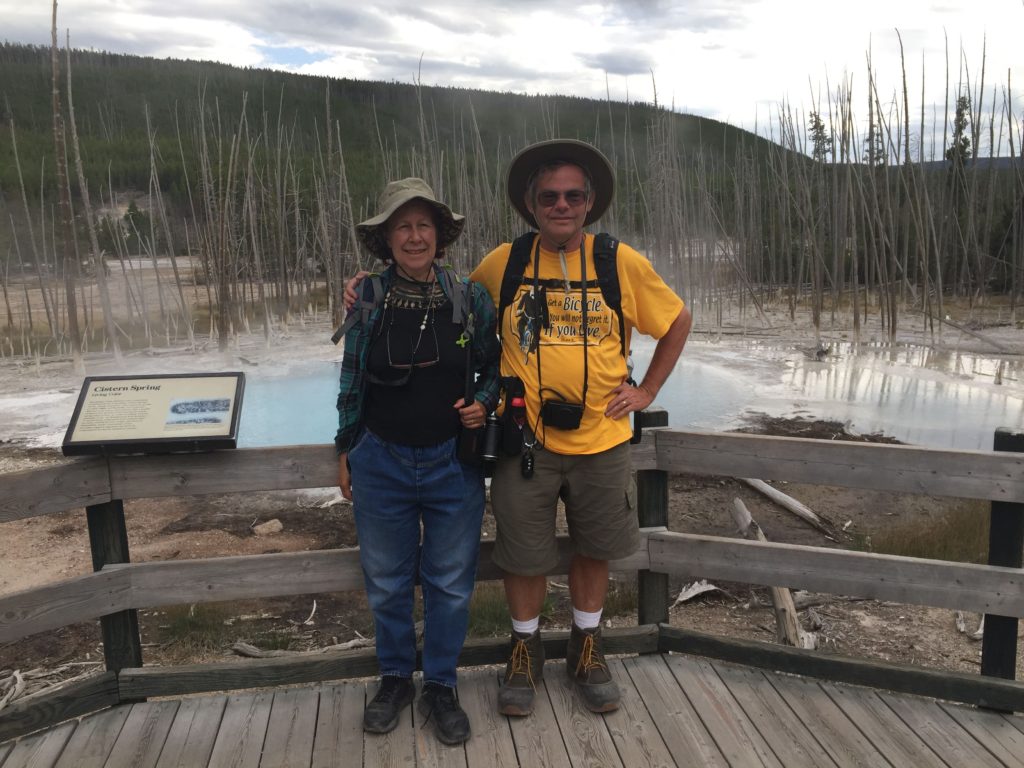
Friday was the start of the Labor Day Weekend. We decided not to try to prolong our stay in Yellowstone, as we would have needed a day or two to rest up before doing more sight-seeing. Instead, we decided to take a long day to traverse the Lamar Valley, where the park wolf packs hang out, and taking the Northeast exit out of the park. This meant again wading through the Hayden Valley bison herd.
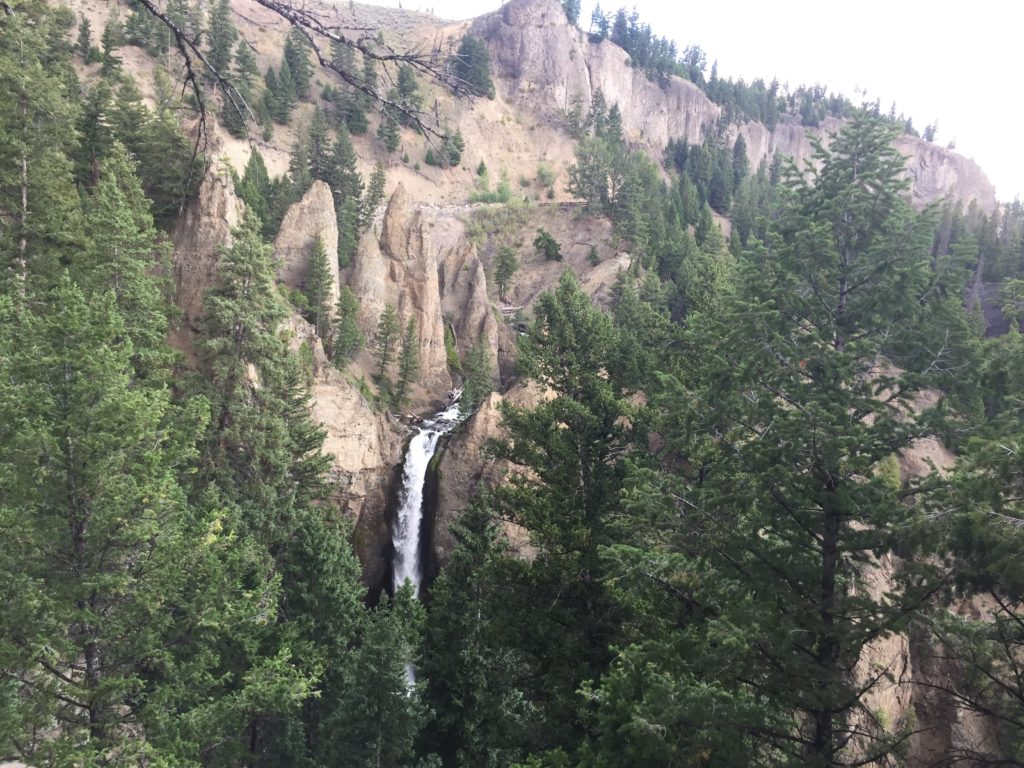
Before reaching the Lamar Valley, we passed Tower Falls, which reminded me of Taughannock in Ithaca, although the volcanic ash erodes in fantastic spires quite differently from the Ithaca shale.
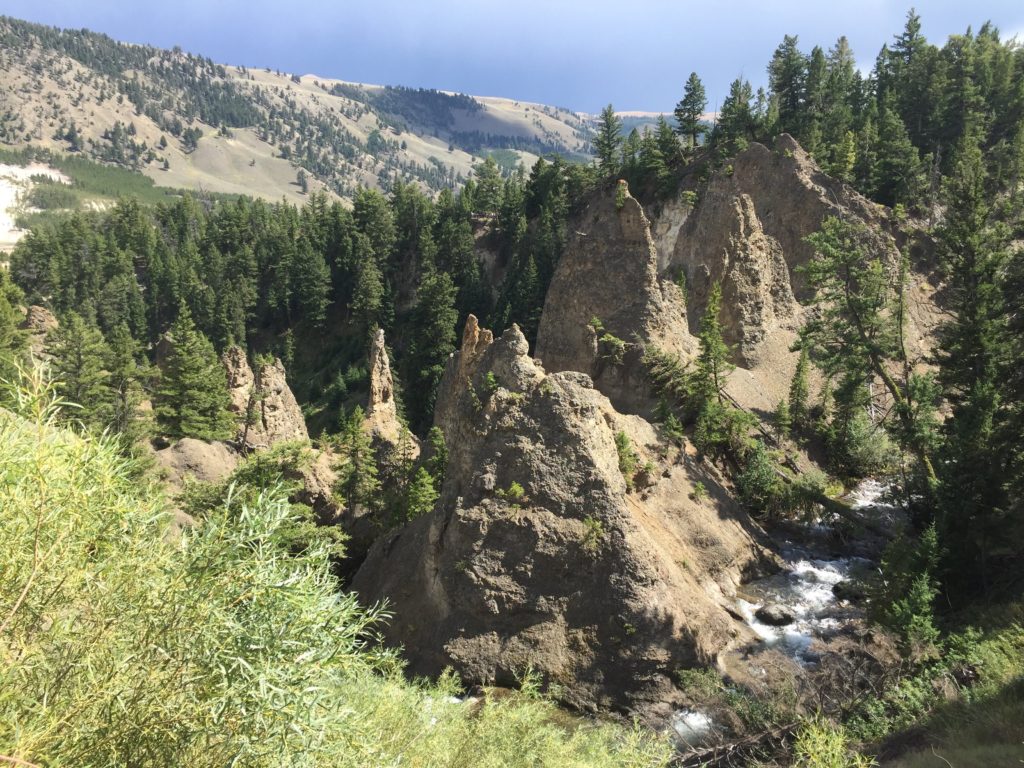
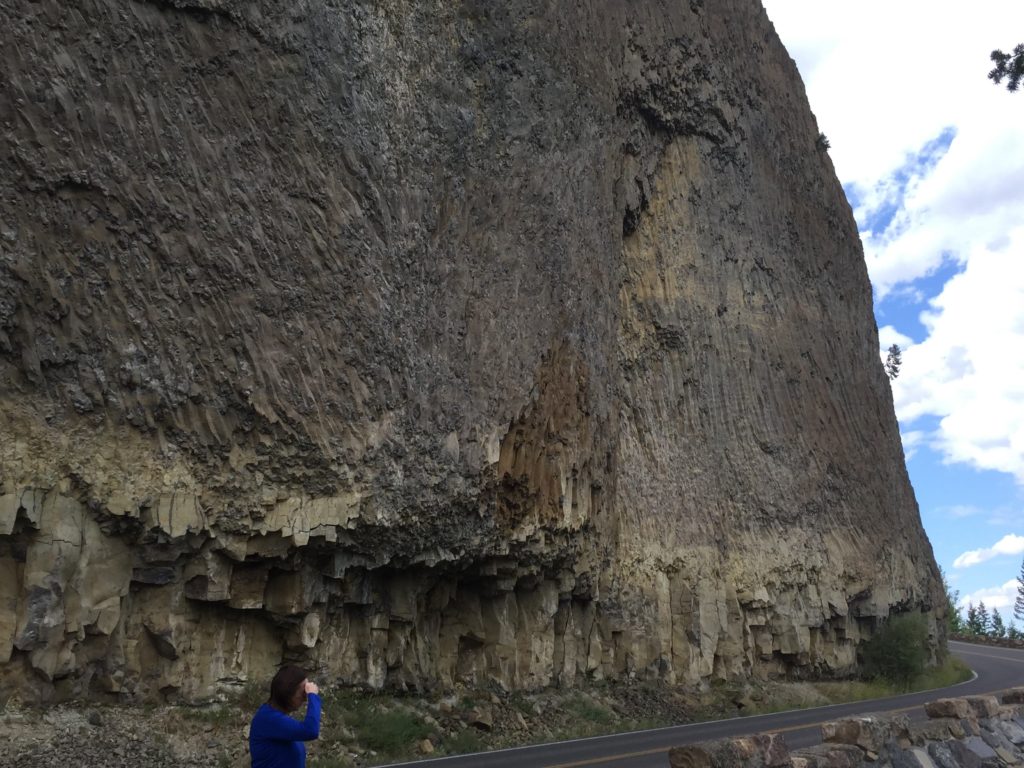
Before entering the Lamar Valley, we passed under this huge basalt wall which was created when molten lava was stopped by a glacier.
The Lamar River Valley is mostly grassland, with herds of buffalo and pronghorns. It yields to Soda Butte, which as lots of wildlife, but more interesting terrain. After Soda Butte, the Soda Butte River Valley again becomes grassland.
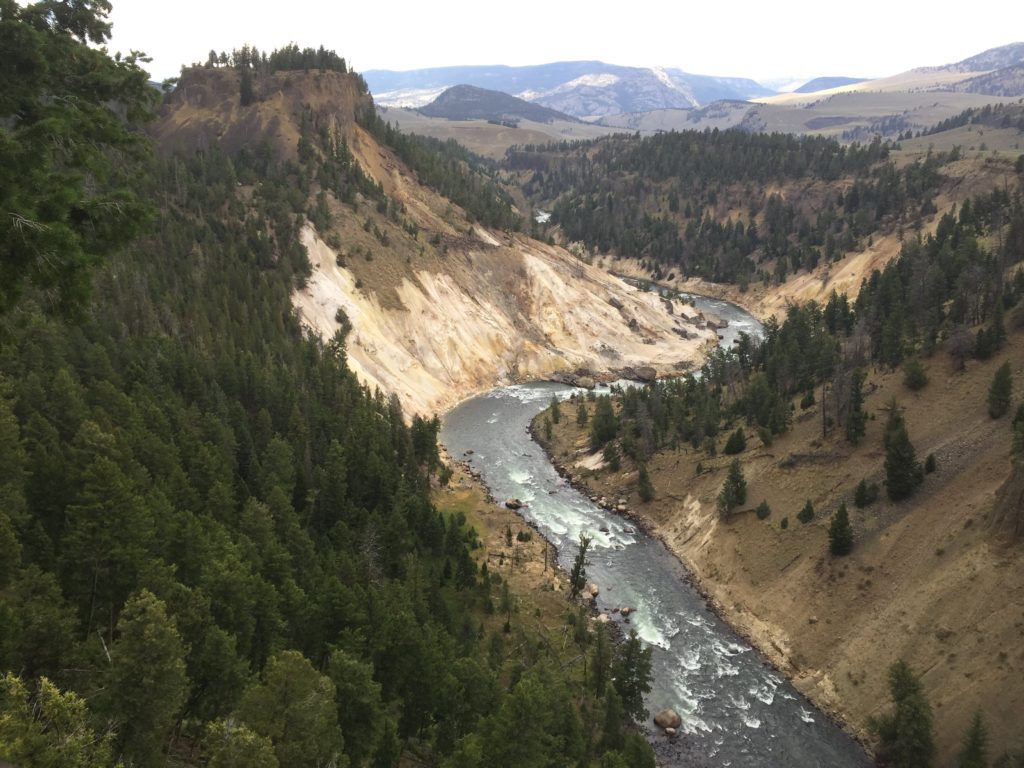
Soda Butte 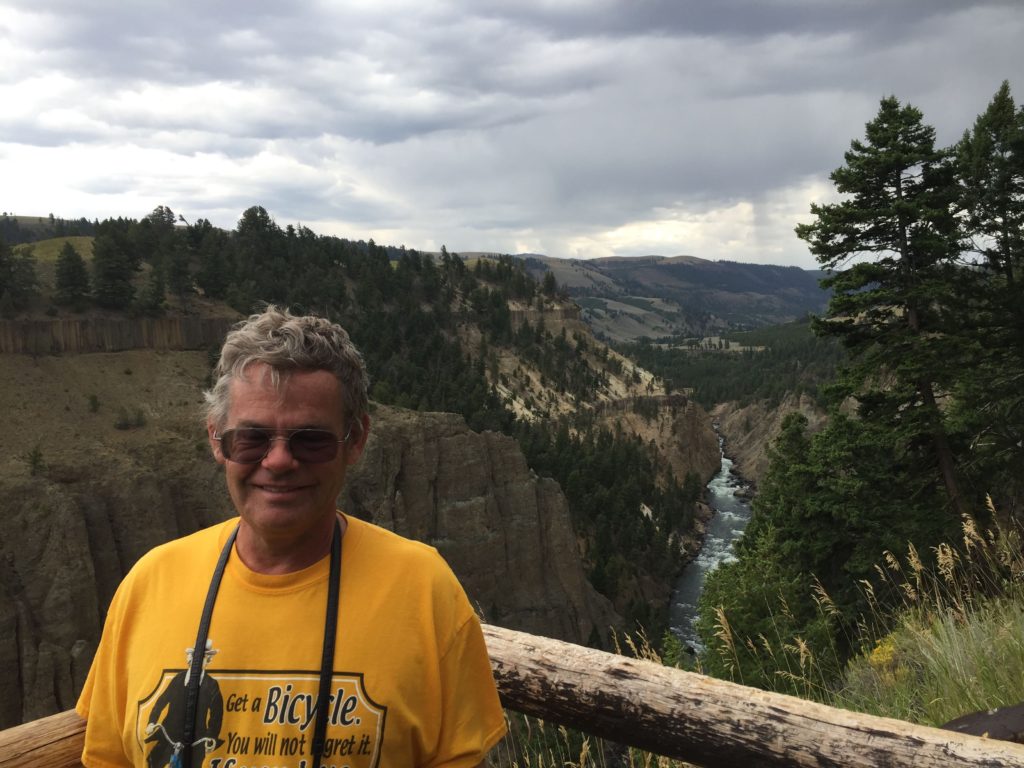
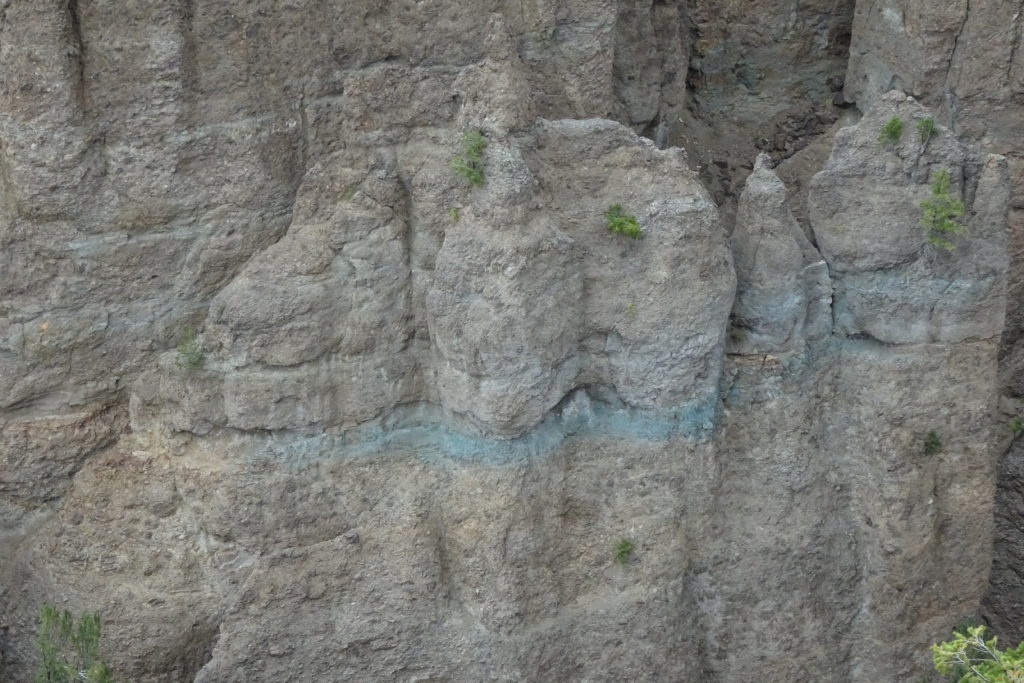
vein of blue clay in Soda Butte
At some point we saw a small but enthusiastic group sitting by the side of the road with tripods and big camera lenses. We learned that wolves had been seen at the spot earlier in the day. As well, a dead bison had attracted a mother grizzly and her cubs and they had been seen the previous day. We decided to wait around with everyone else.
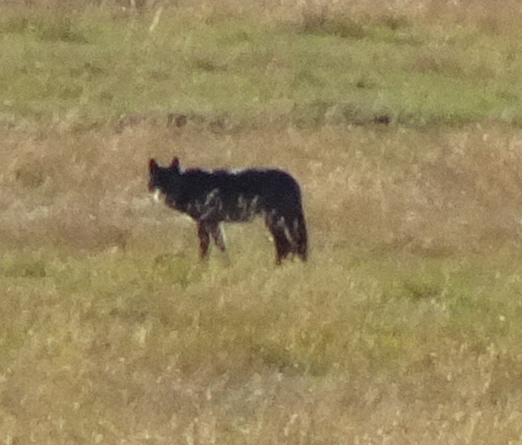
It made for quite a long day, but we ended up chatting with a young couple who had seen a couple of wolves that morning. Because we were talking, we stayed much longer than we might have otherwise. And we were rewarded by spotting a wolf. The wolf stayed in the area for quite some time, and seemed to be worrying at something near the creek. However, even with binoculars and a telephoto lens, we could not see what it was doing. Since the ravens did not seem to be interested, it probably was not dealing with prey.
Once the wolf left the area, we did too. The grizzlies did not make an appearance. We just missed seeing a bear that was ambling near the road farther along, but the bear left the area as we were parking.
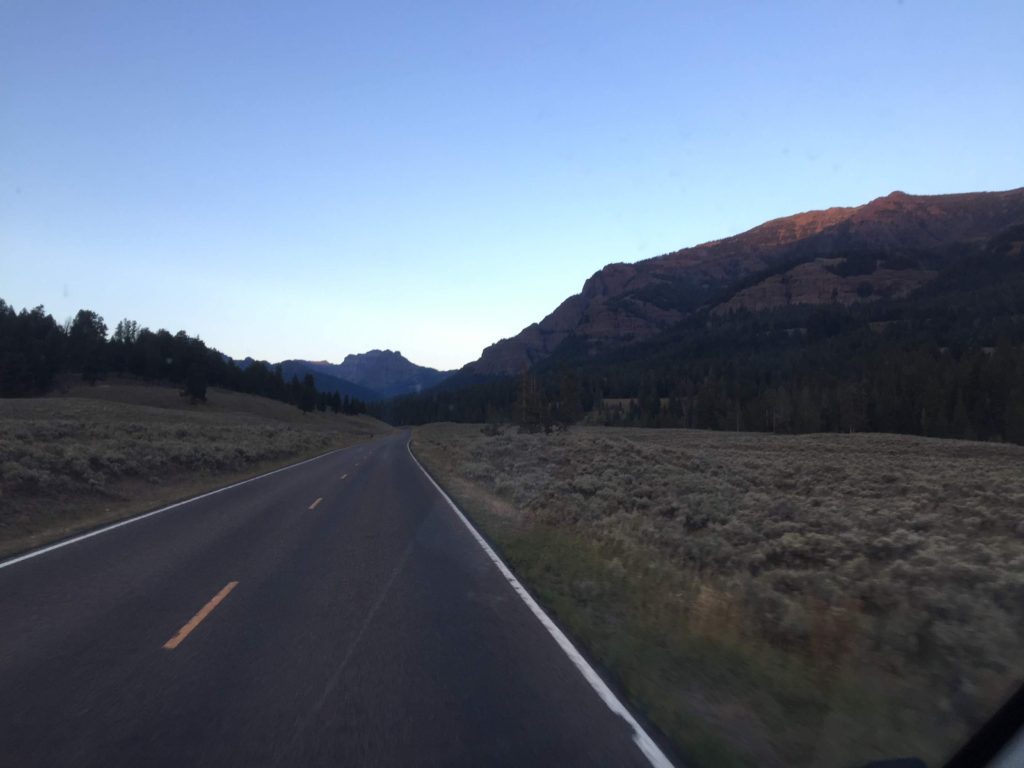
We still had quite a distance to go to leave the park and get to Red Lodge, where we planned to spend the night.
